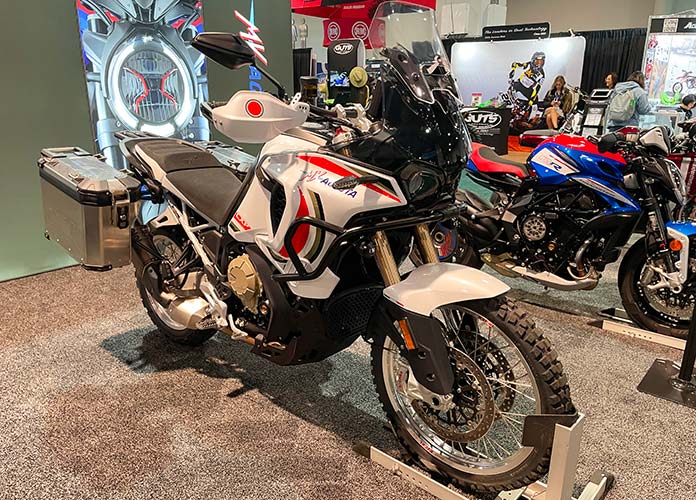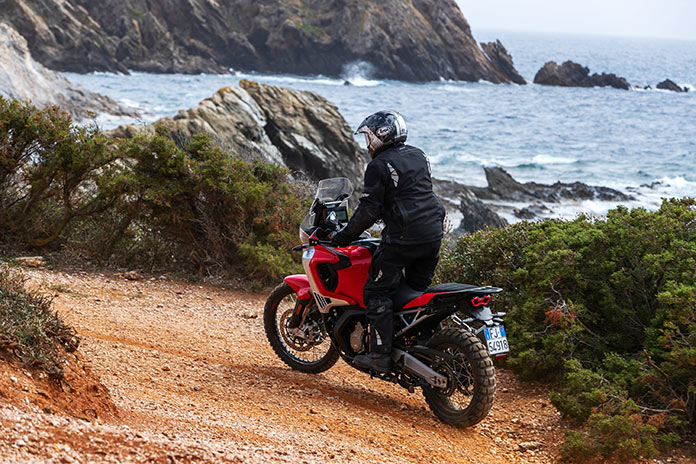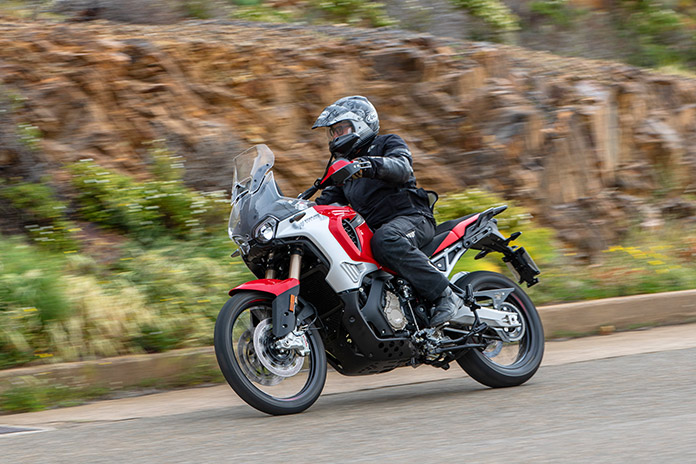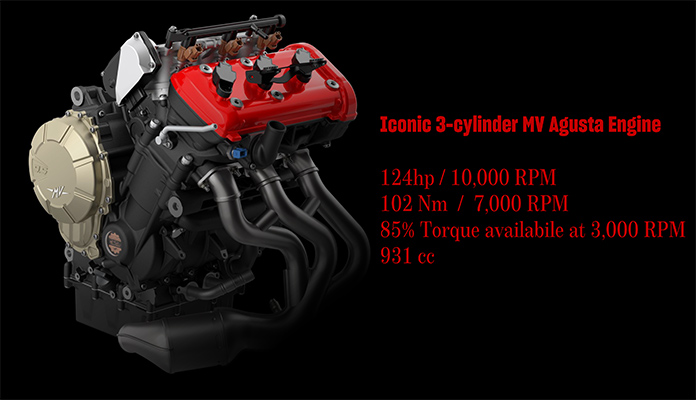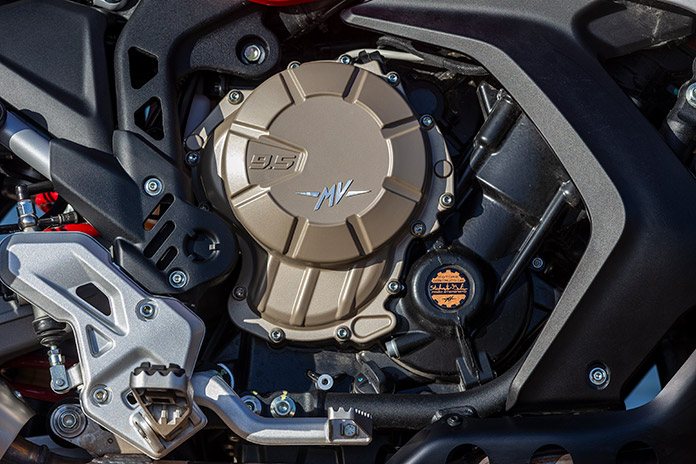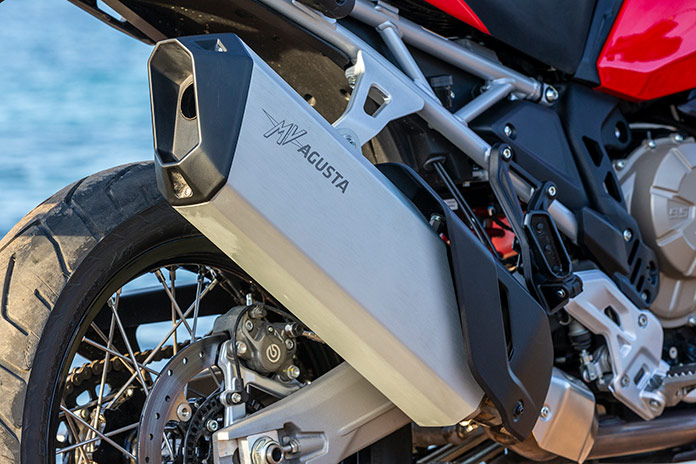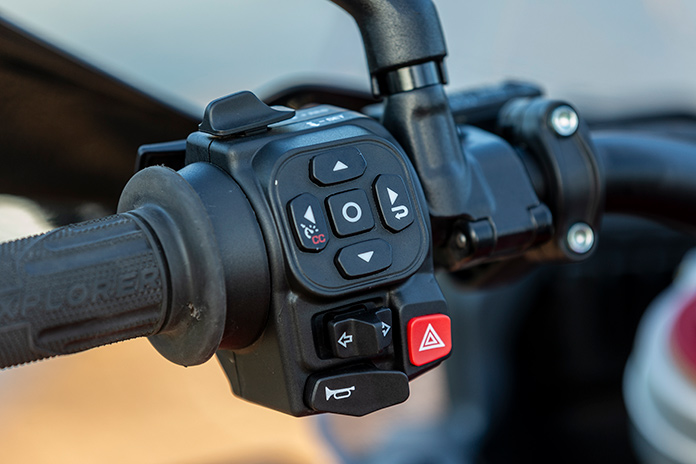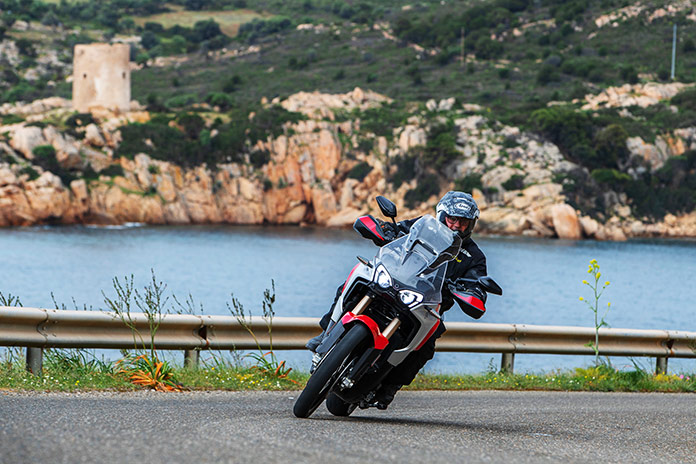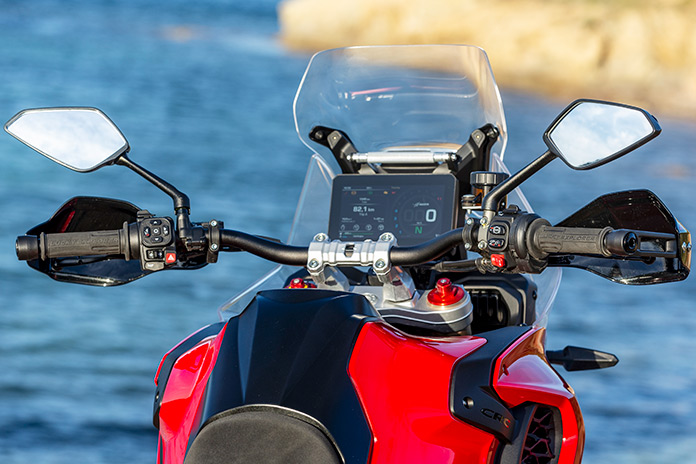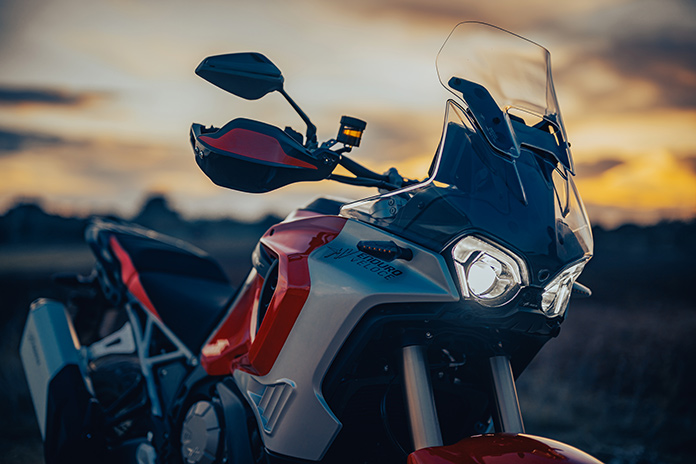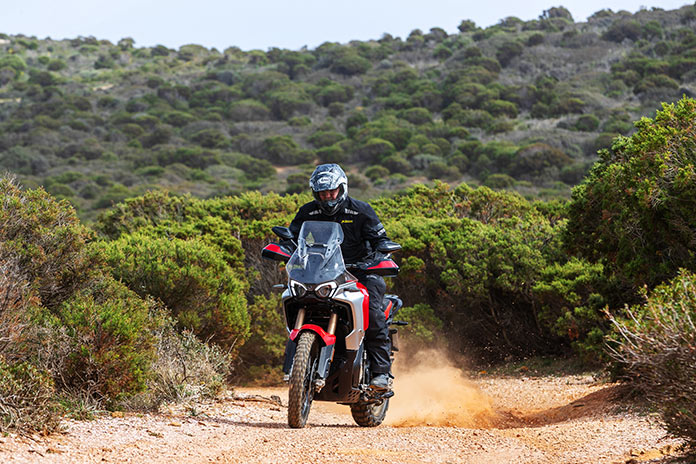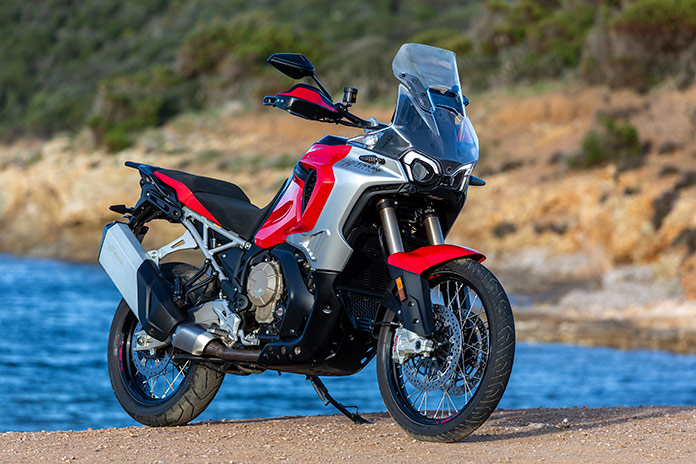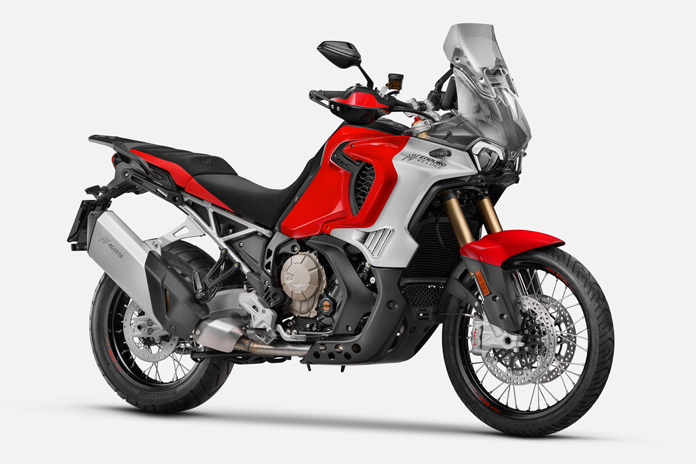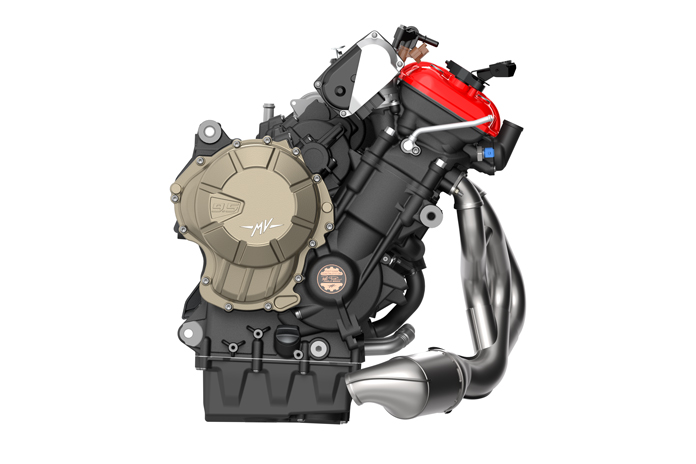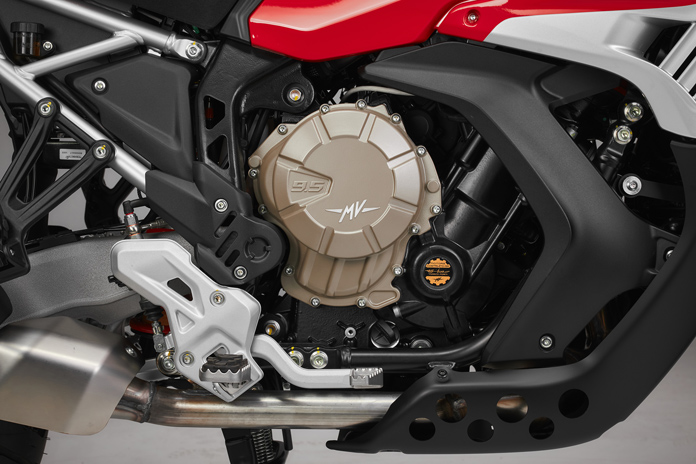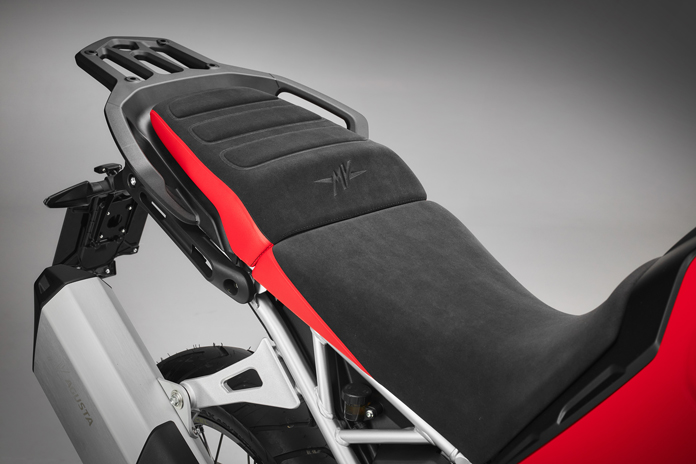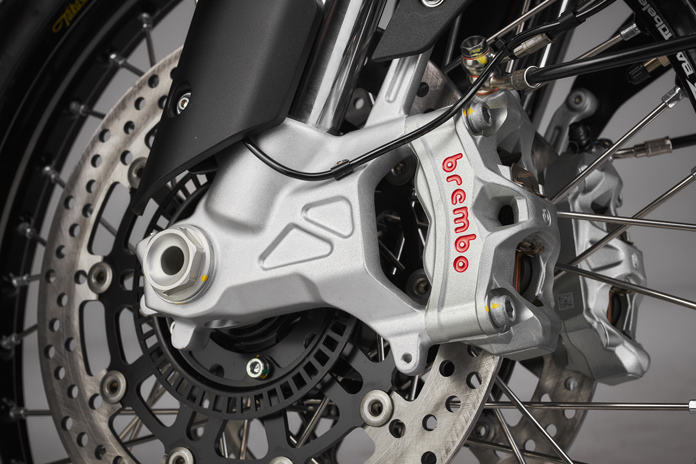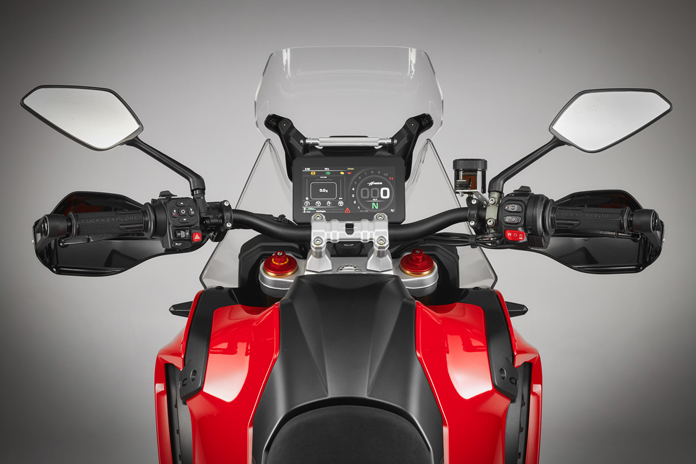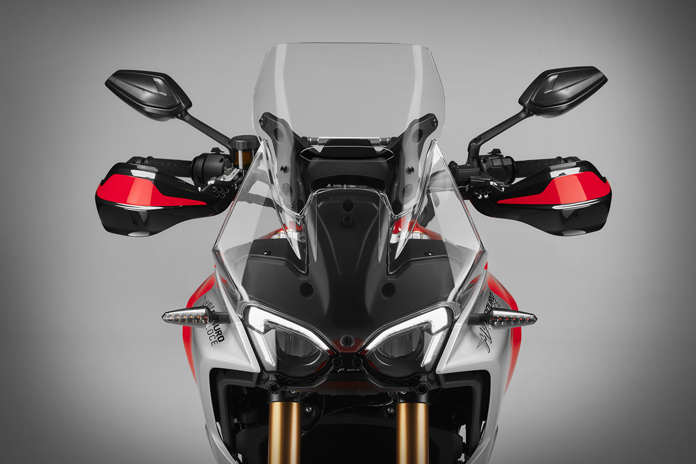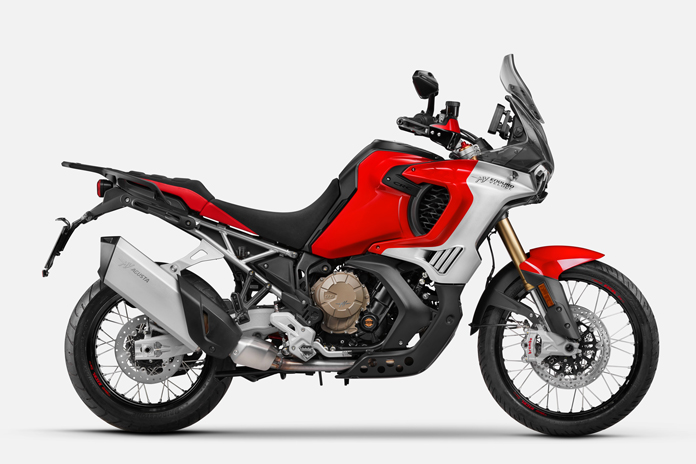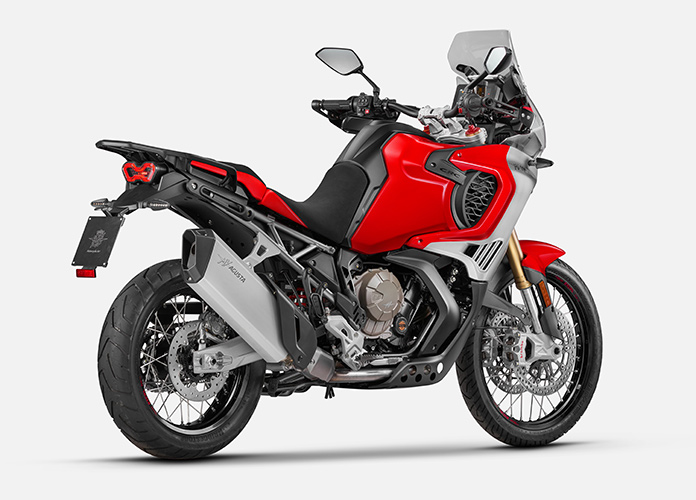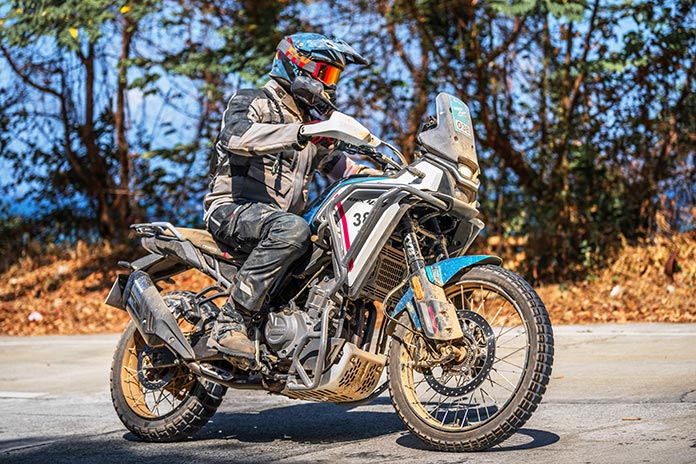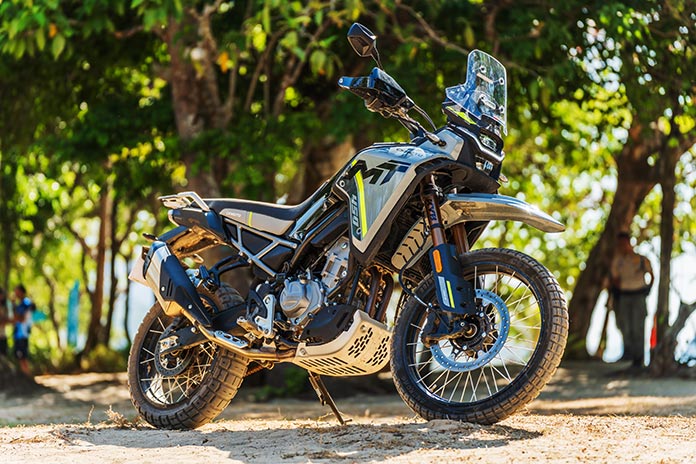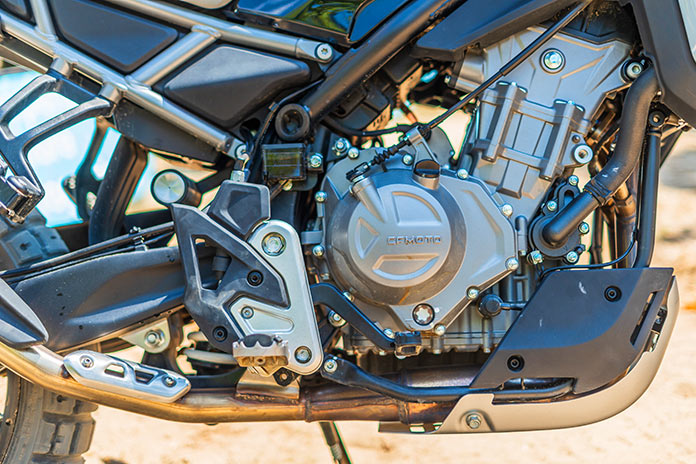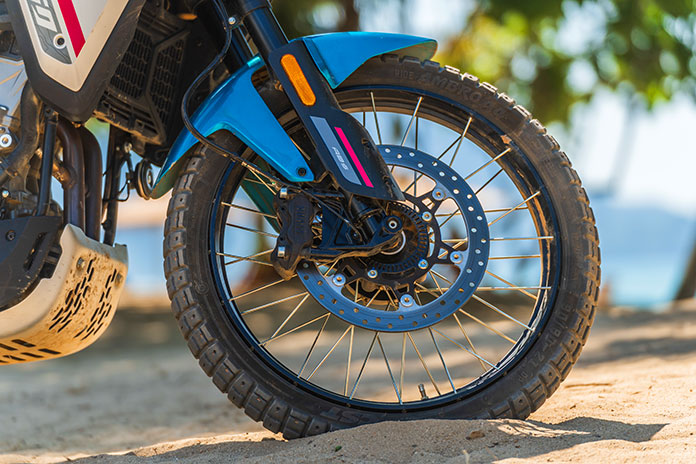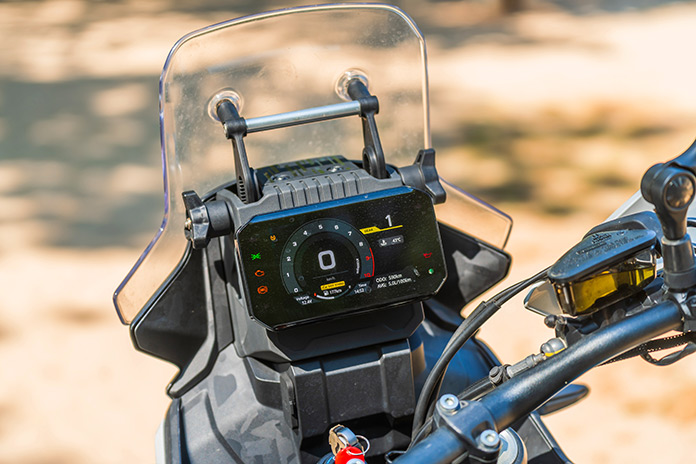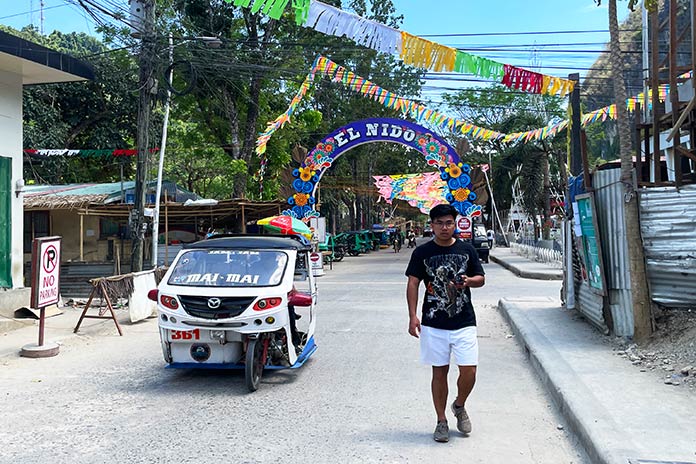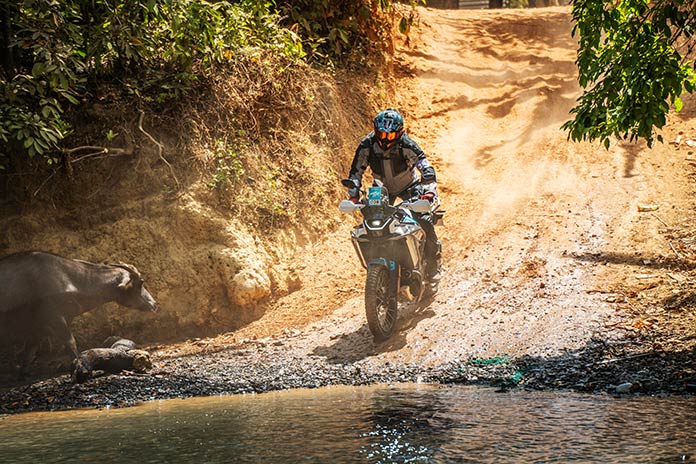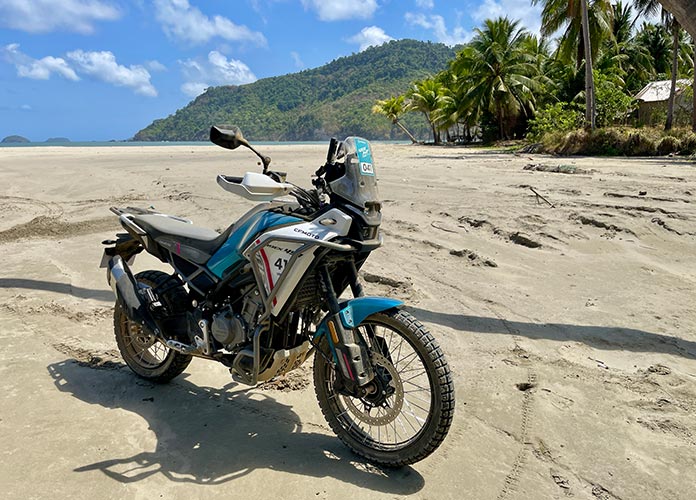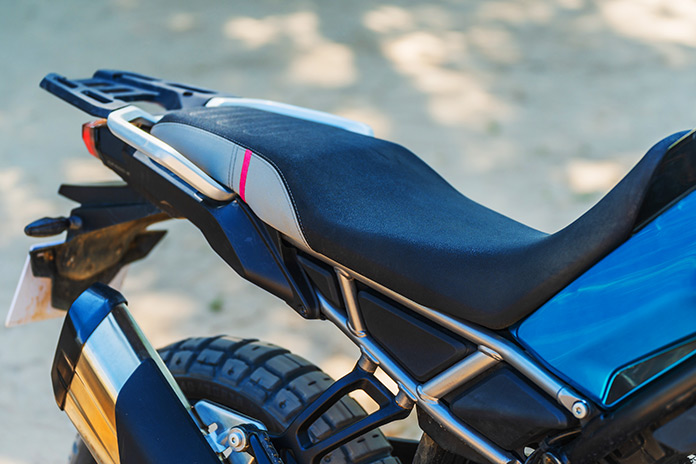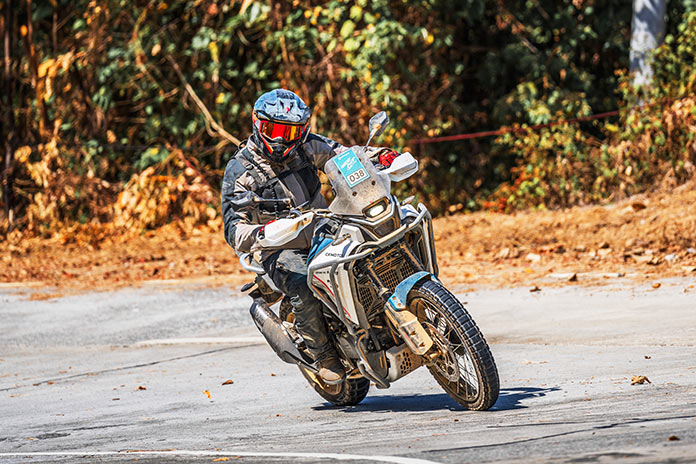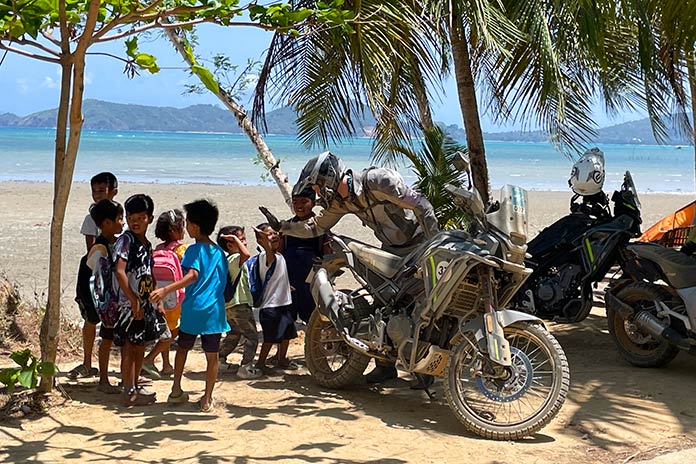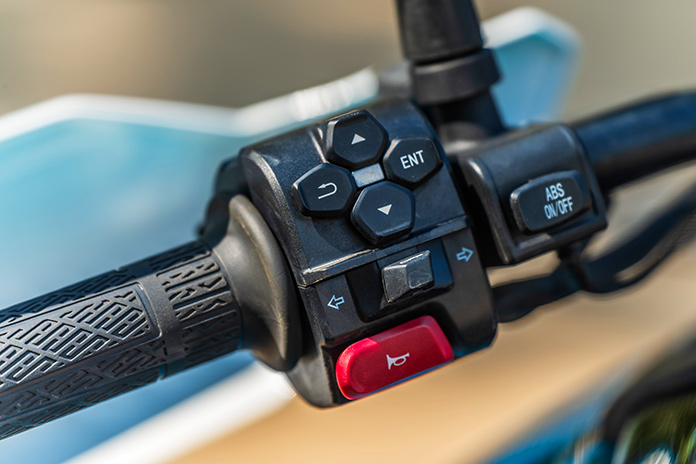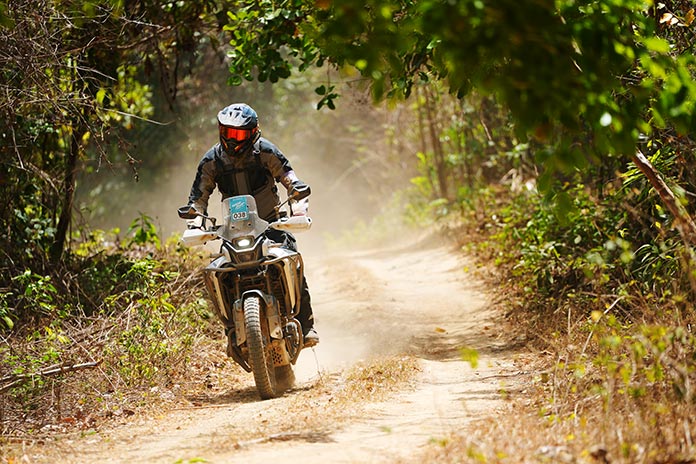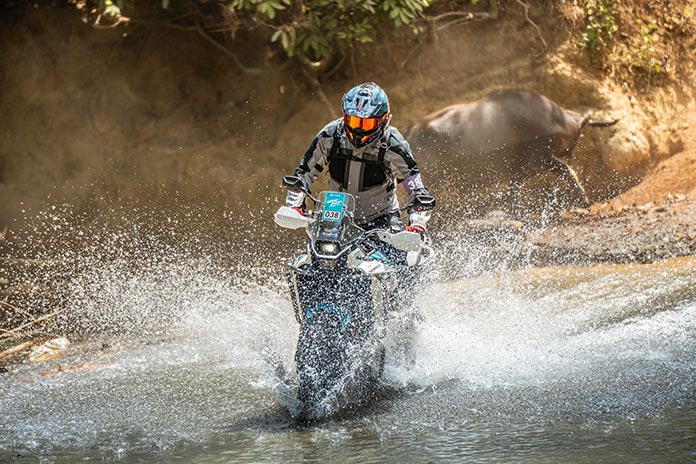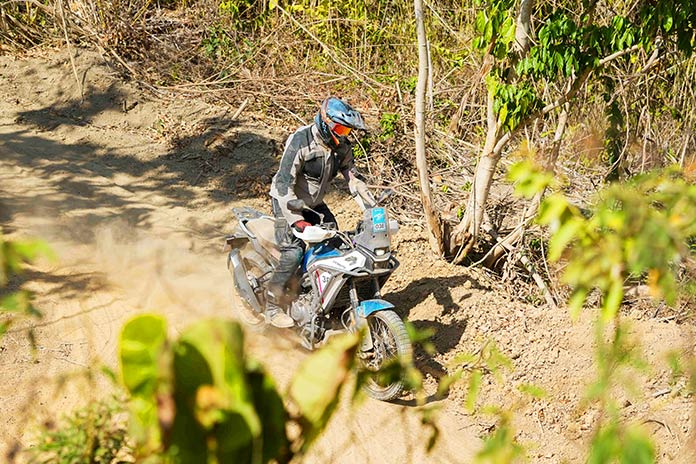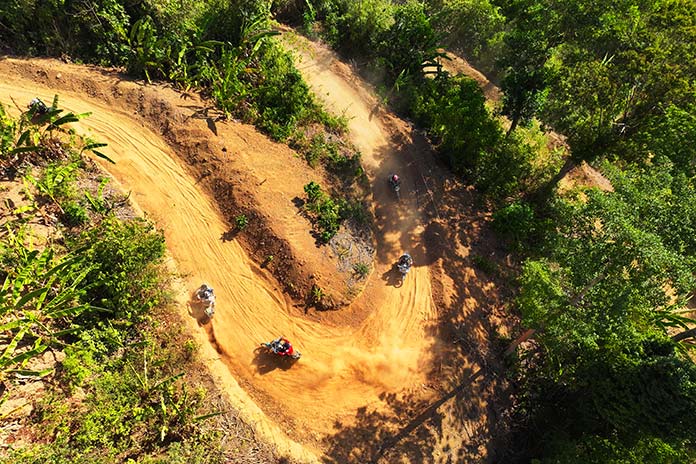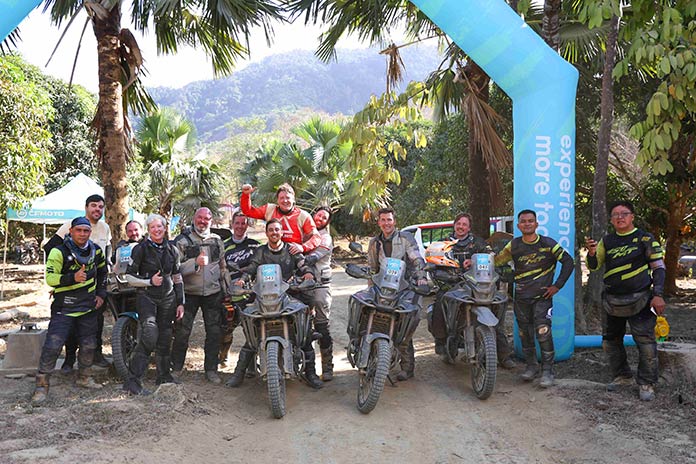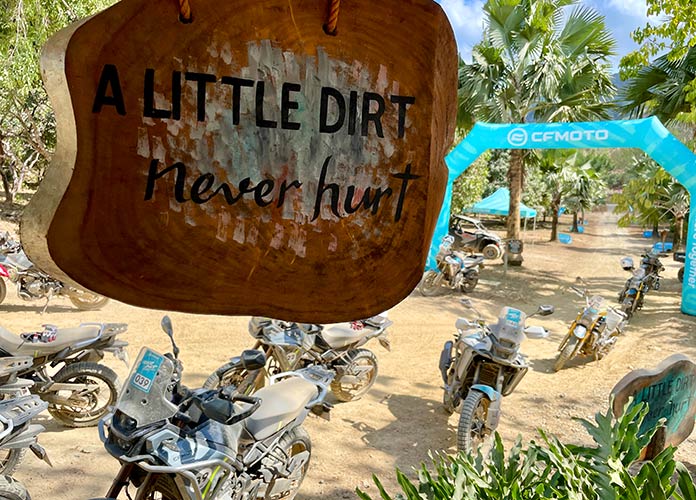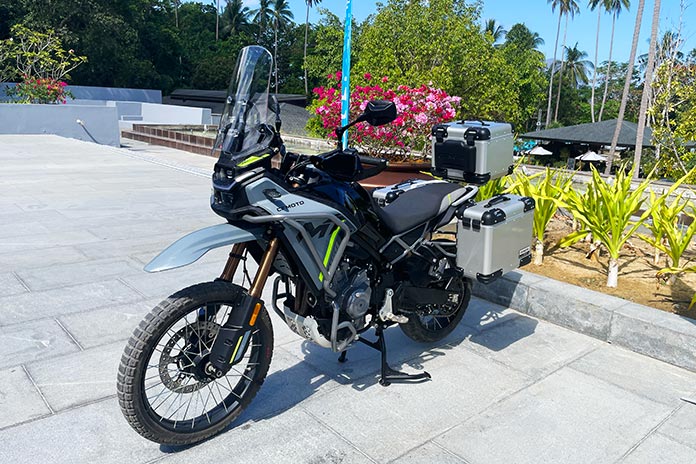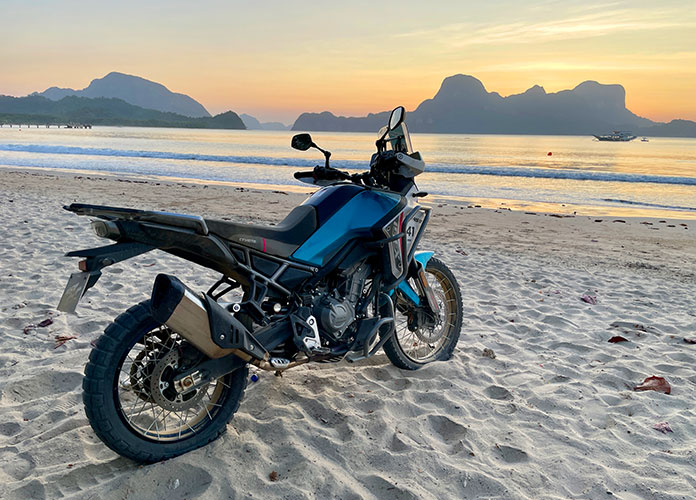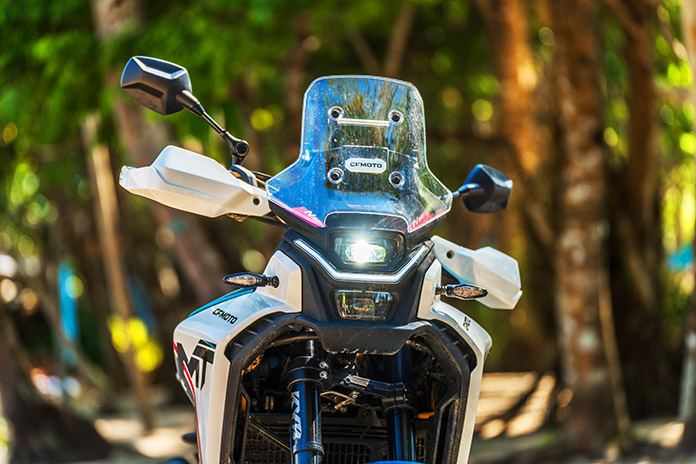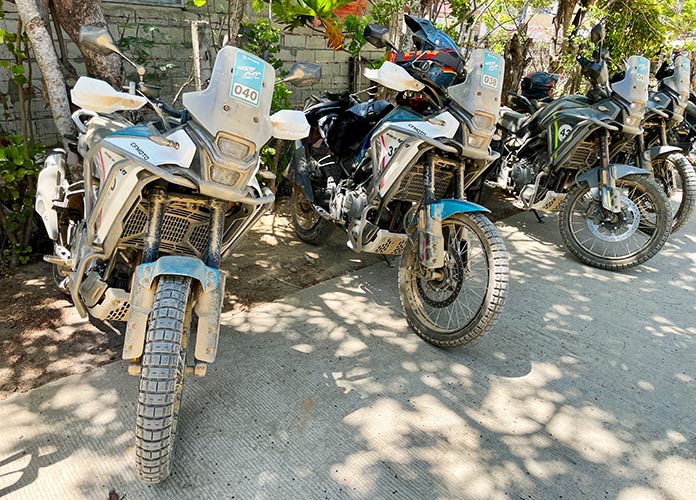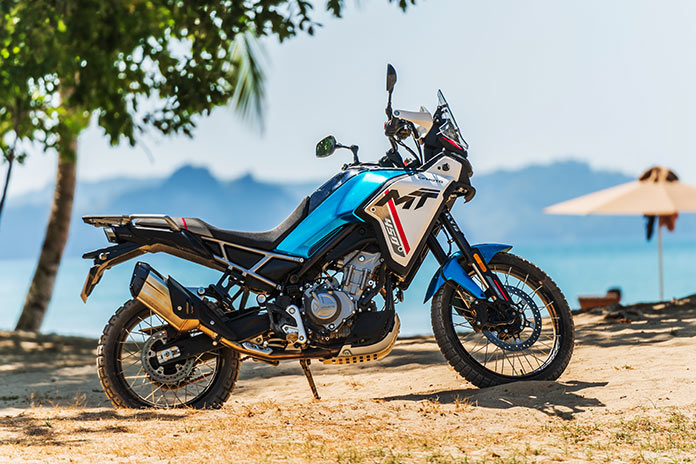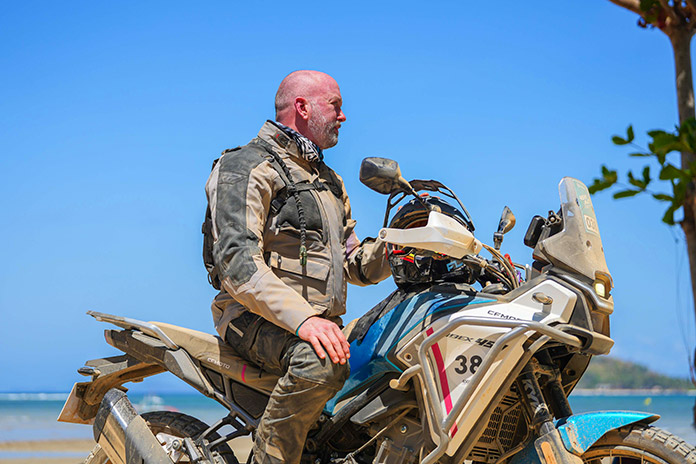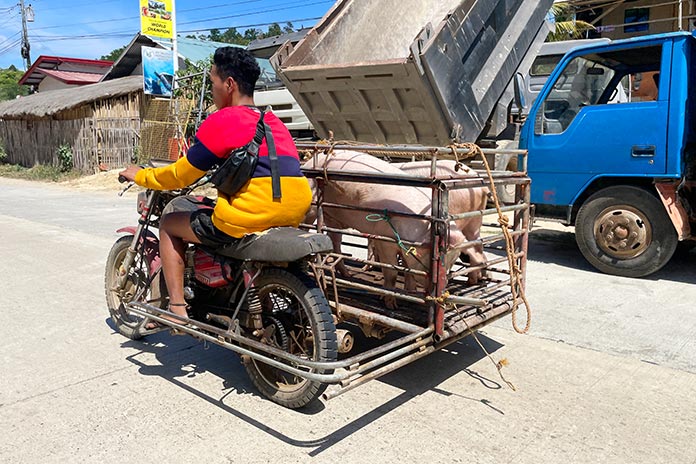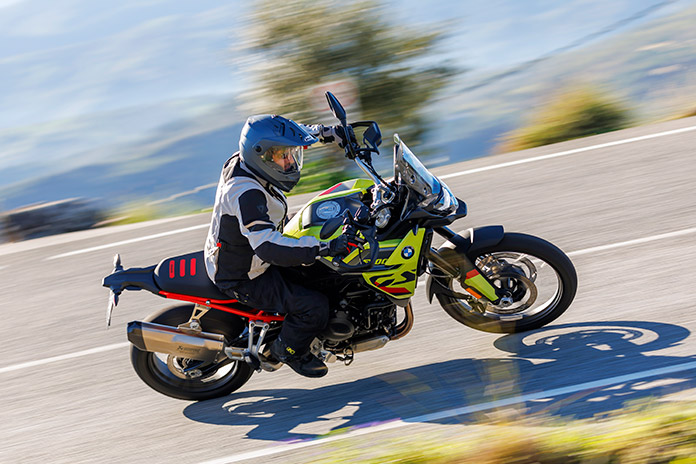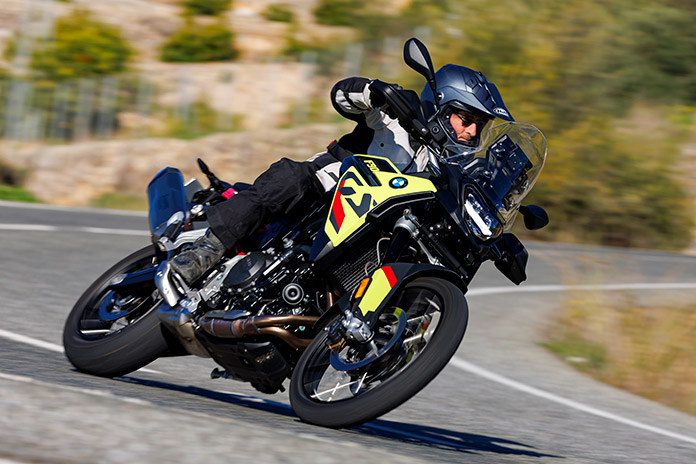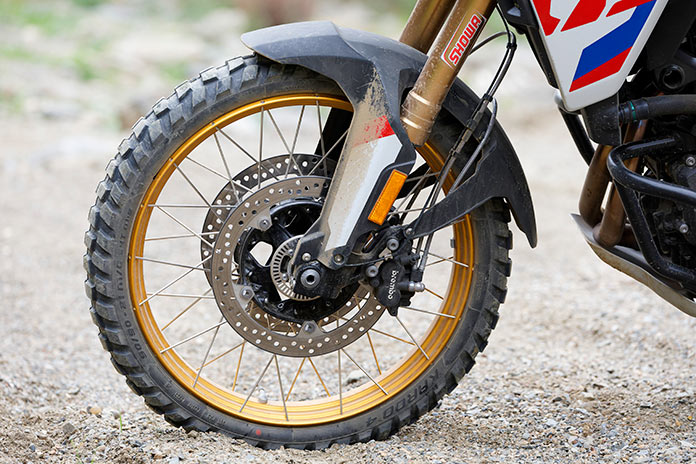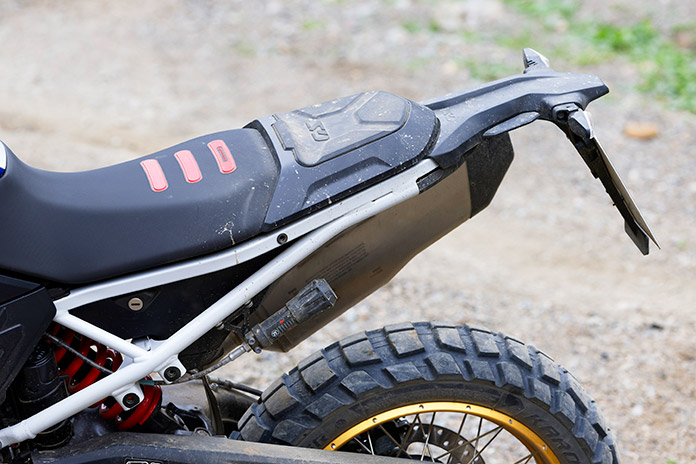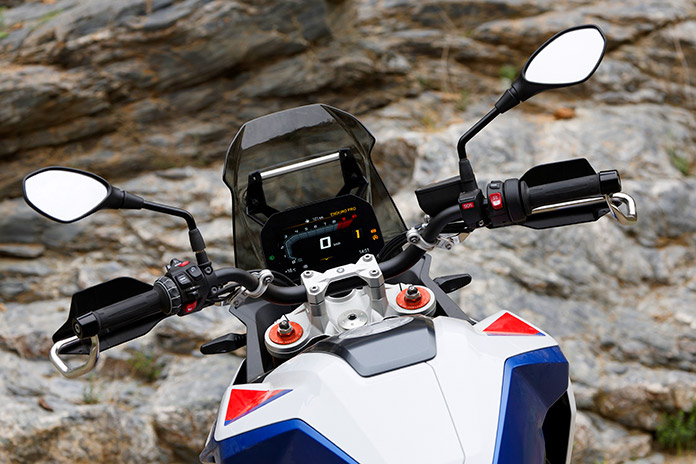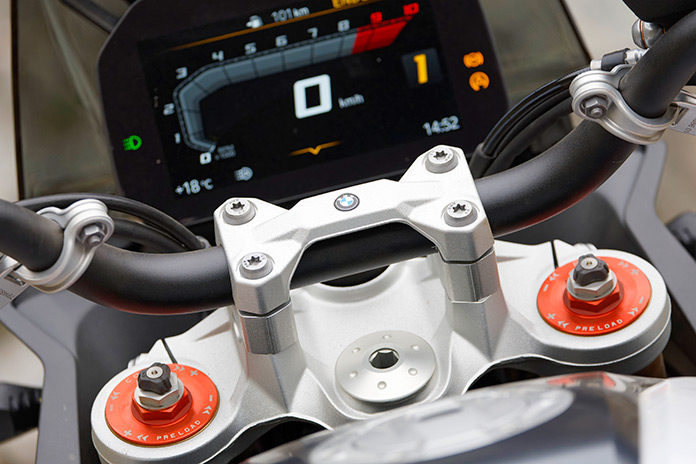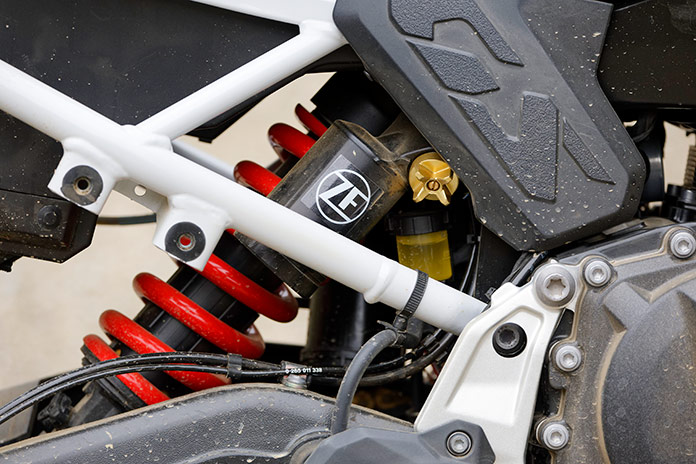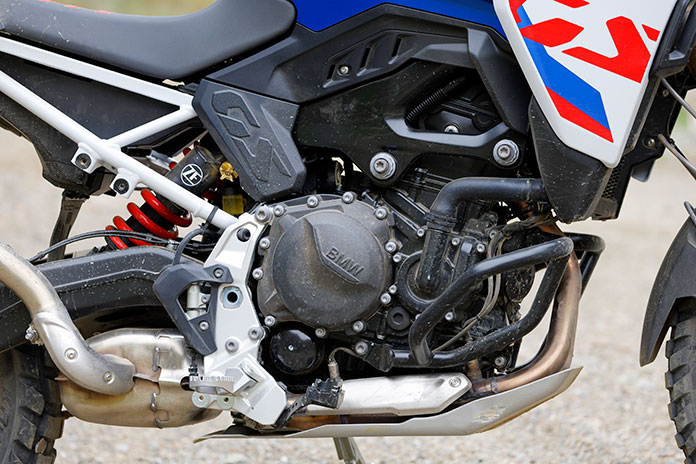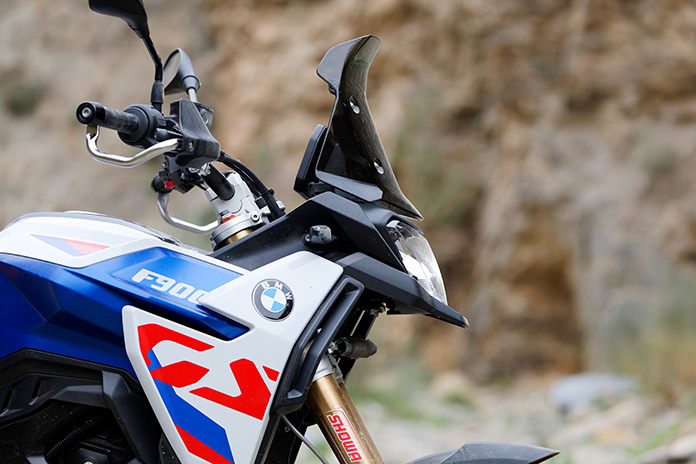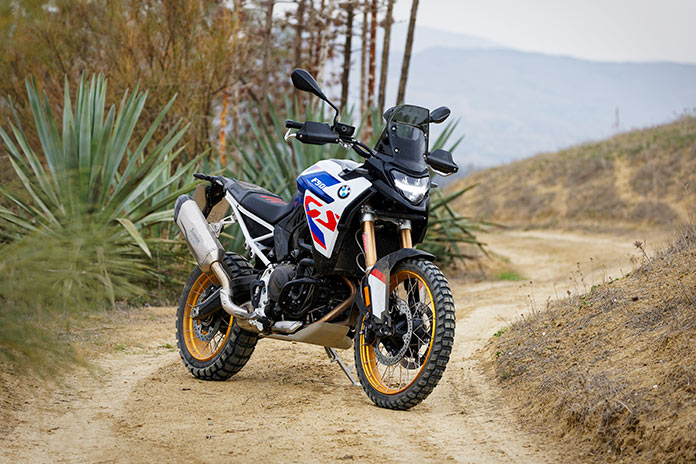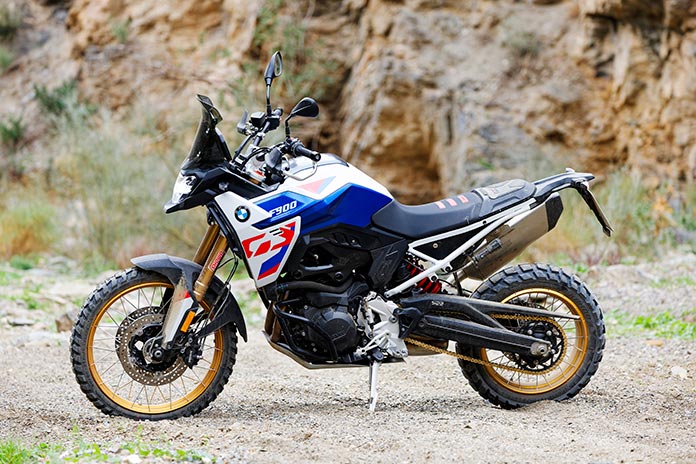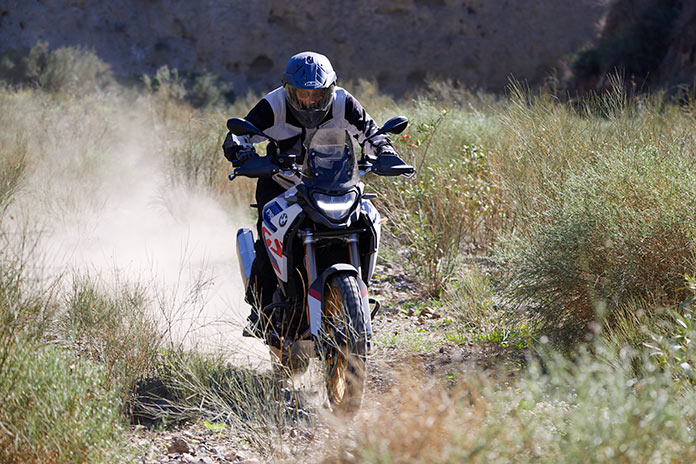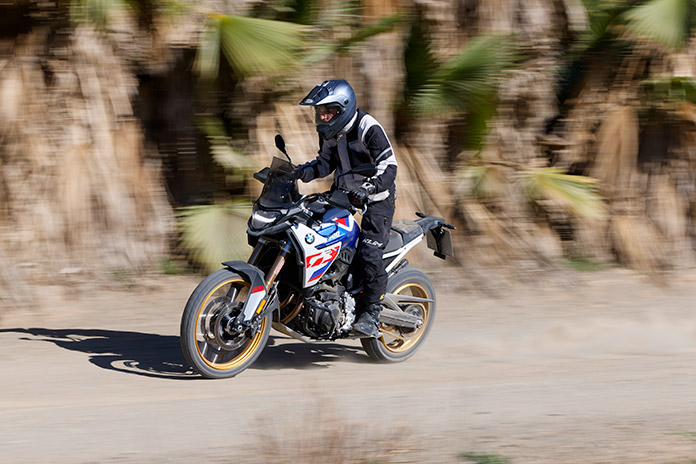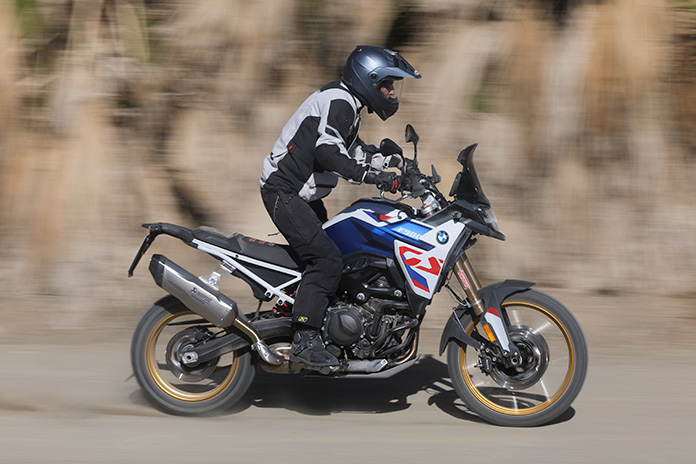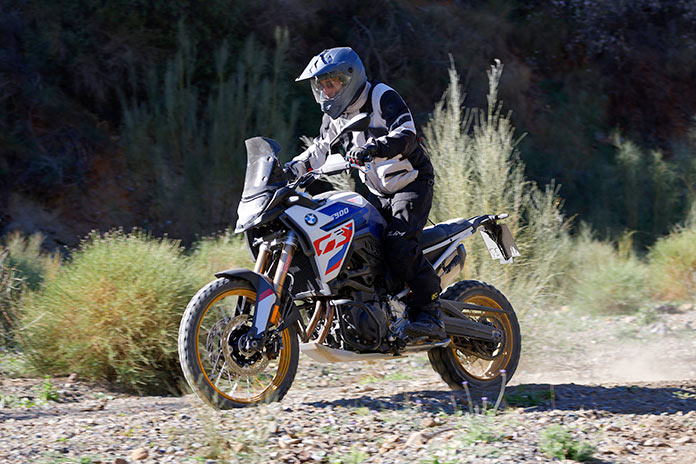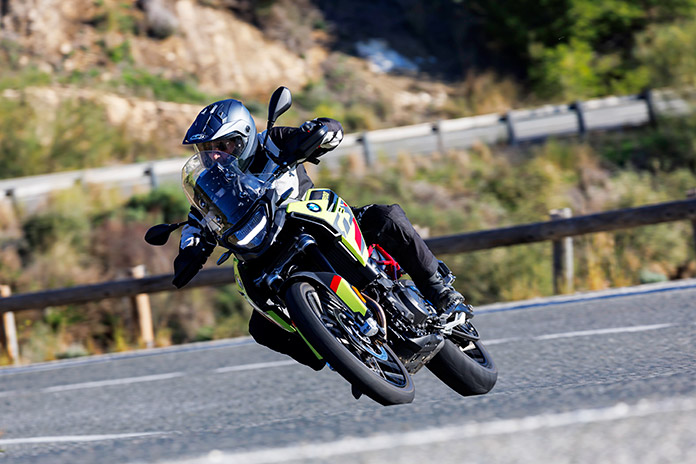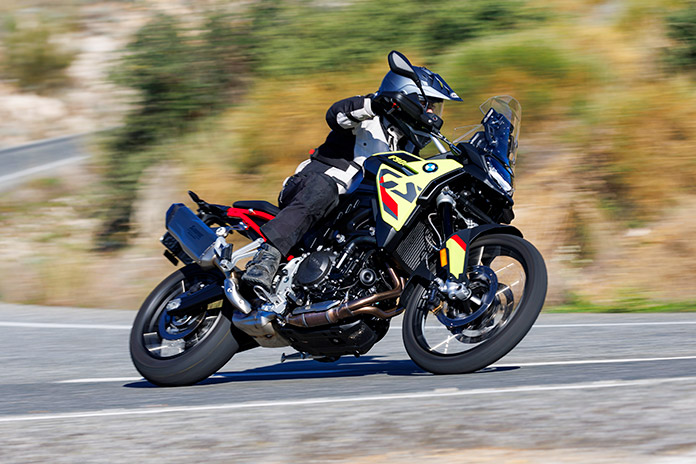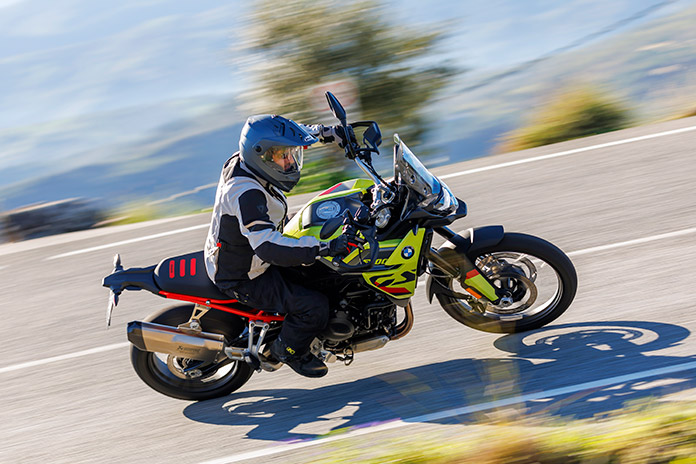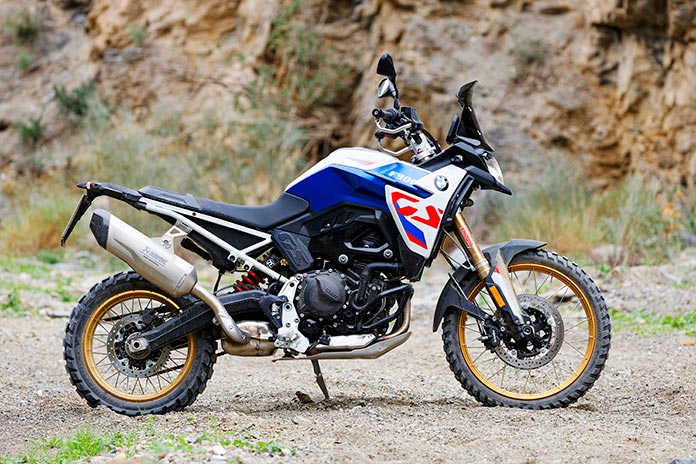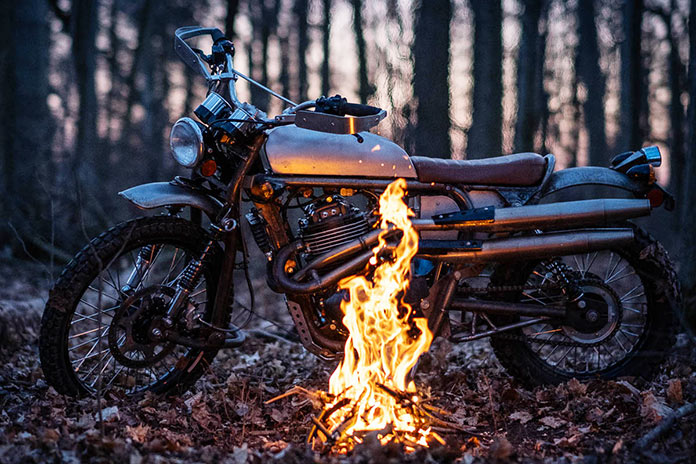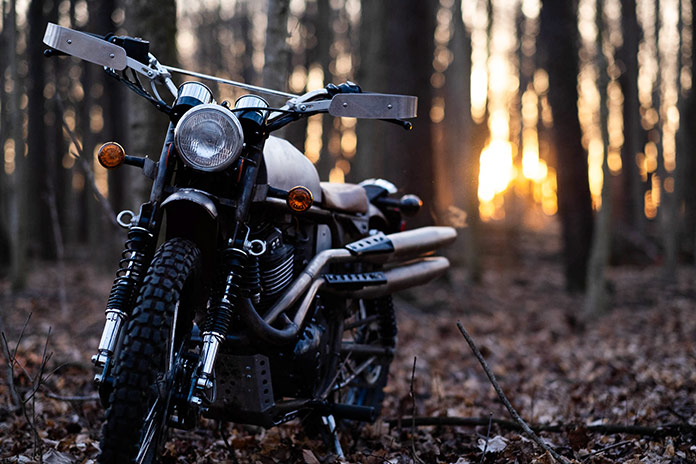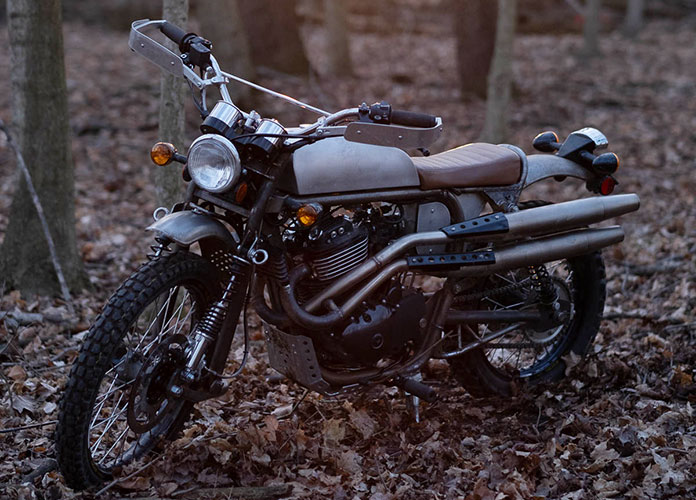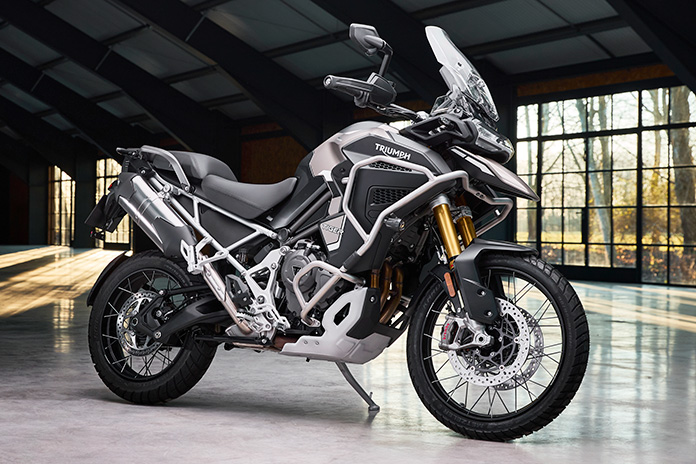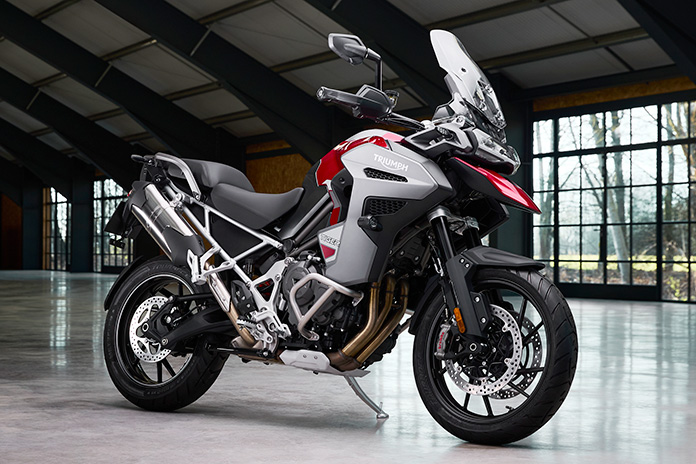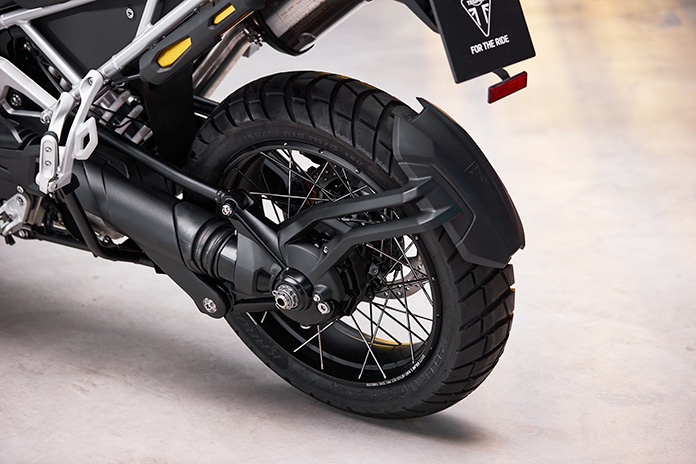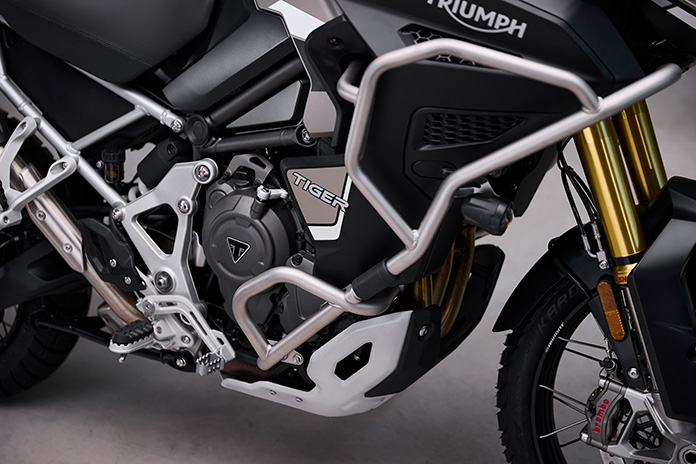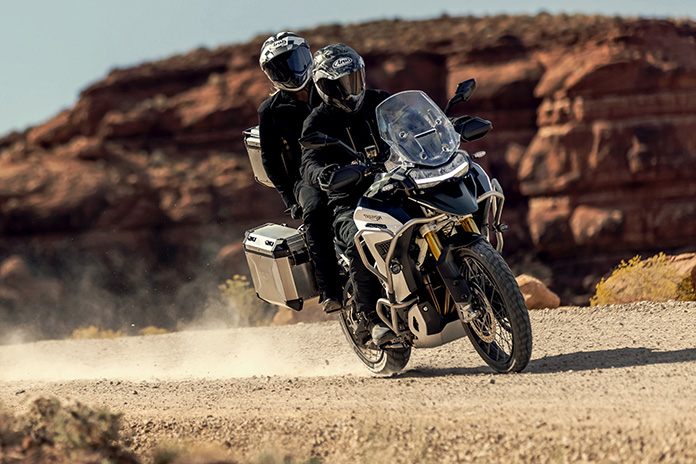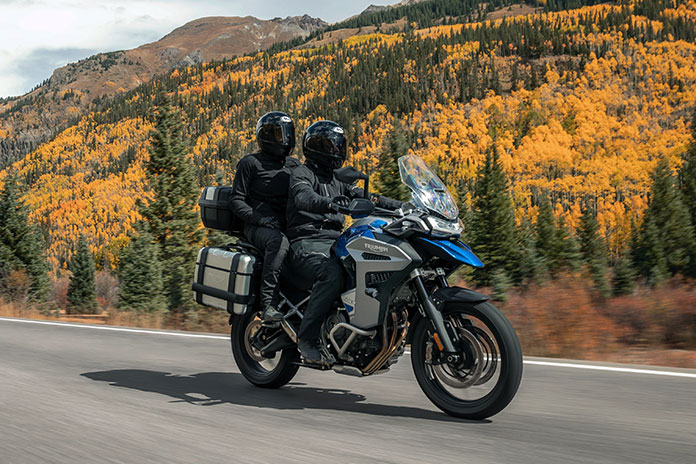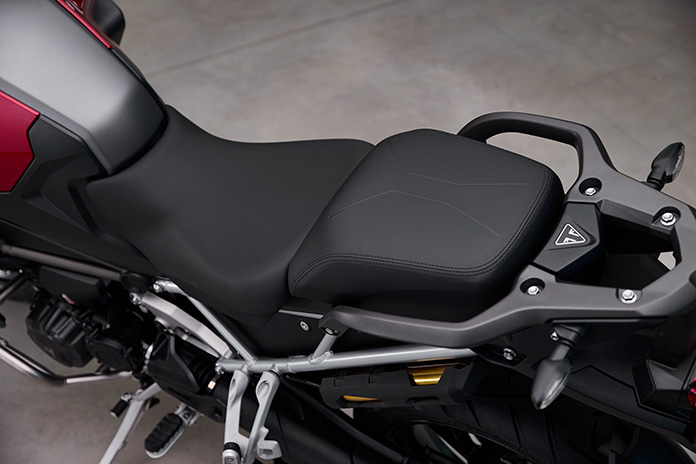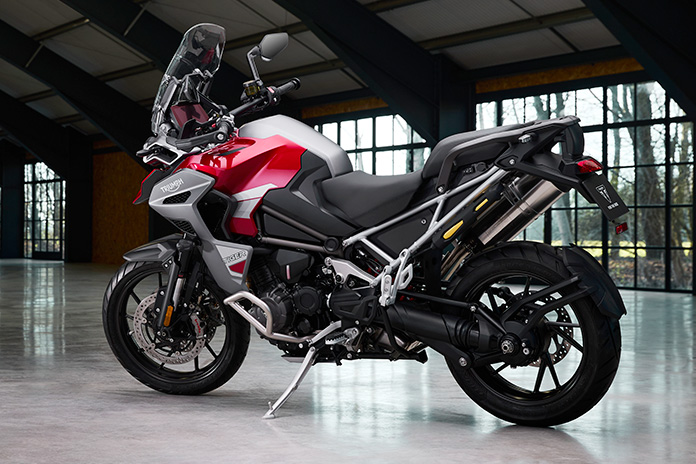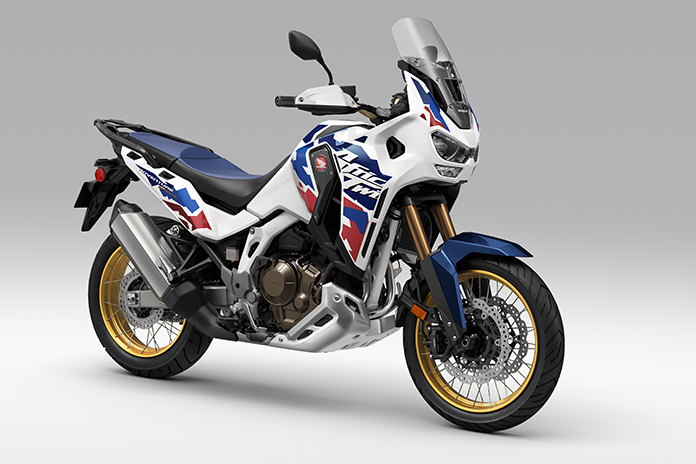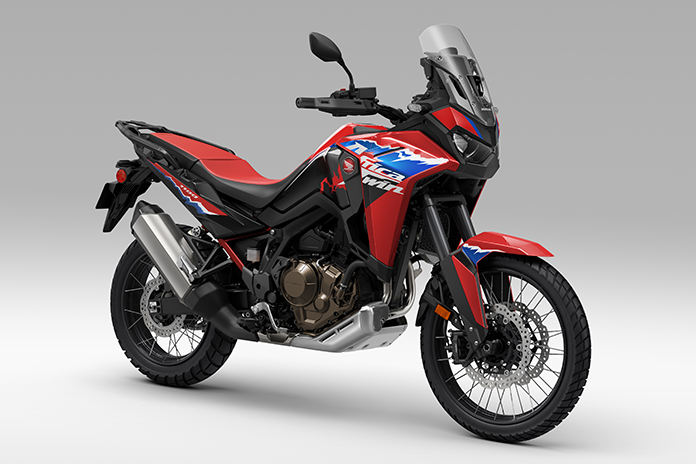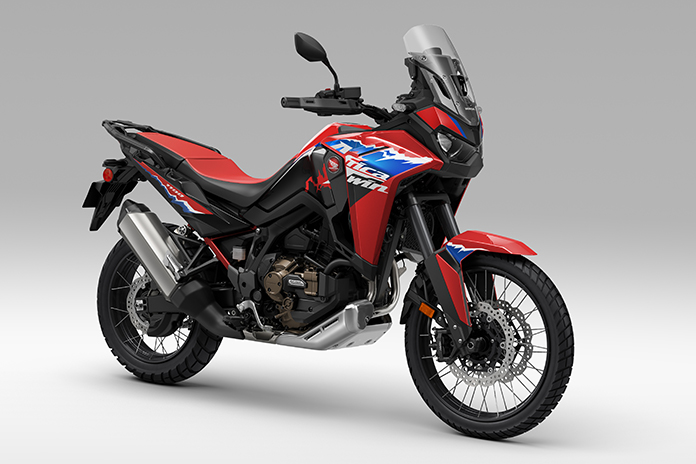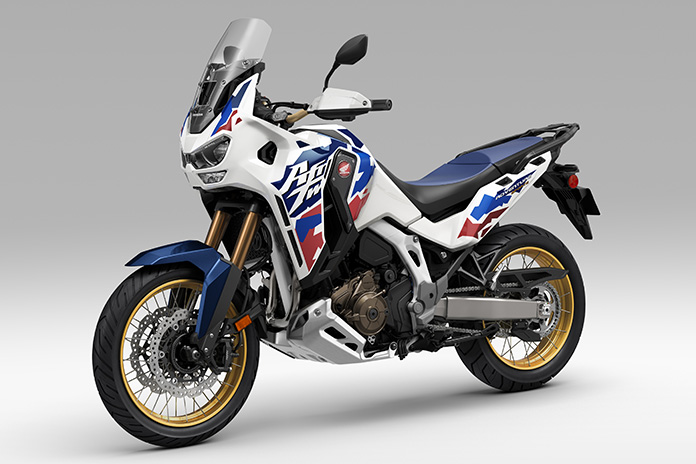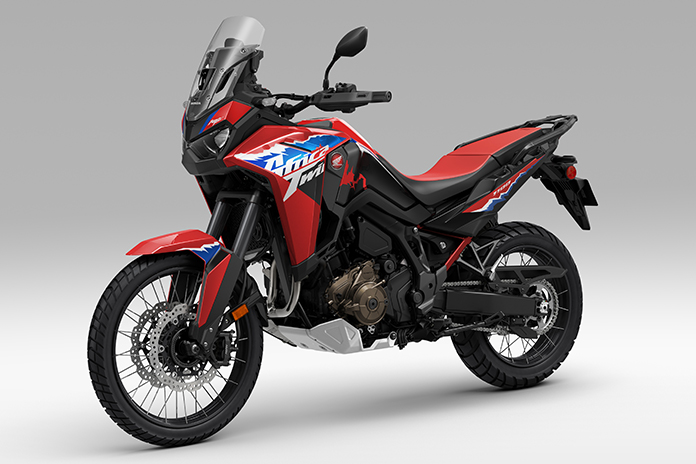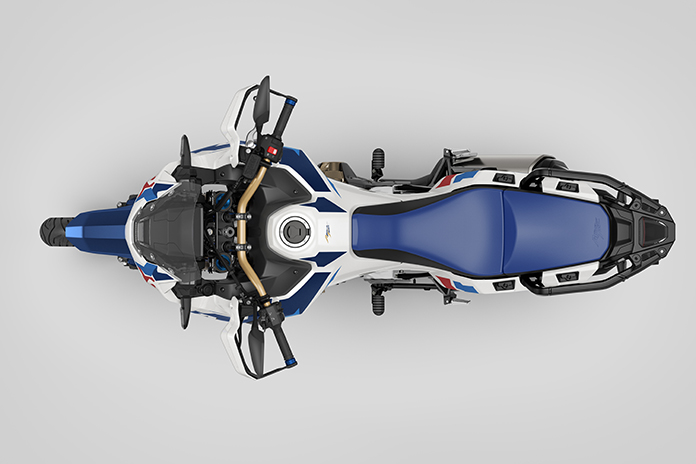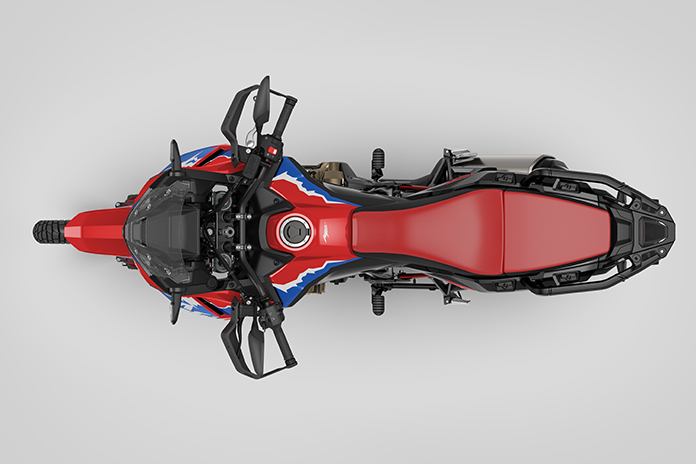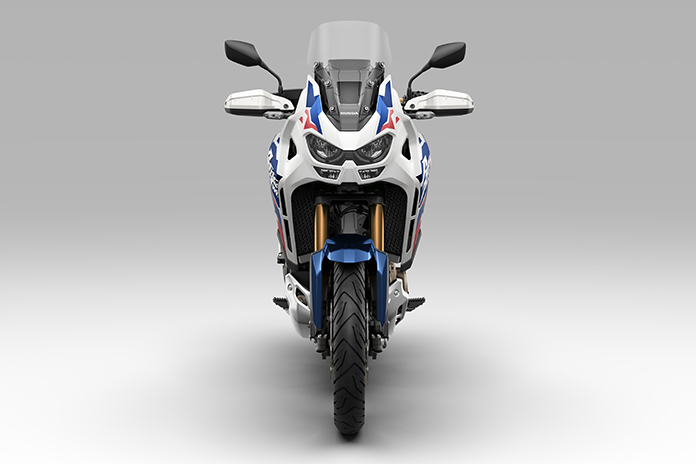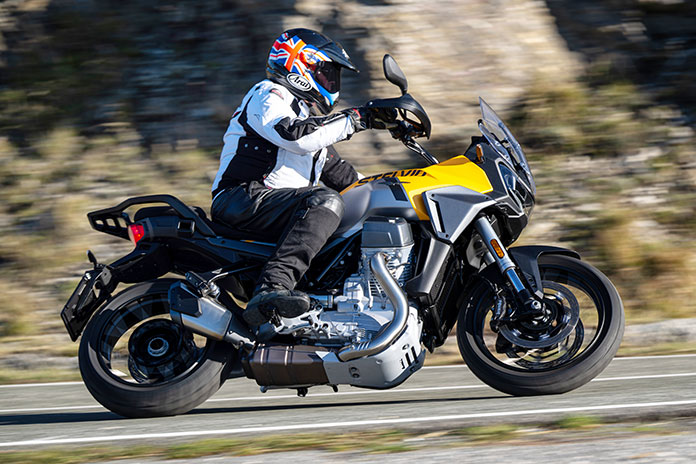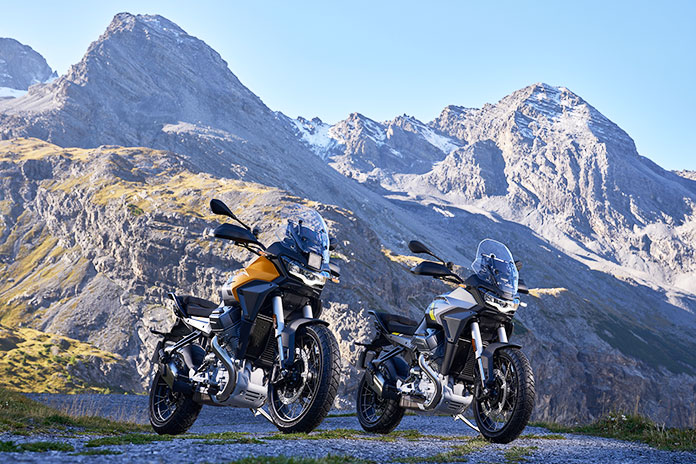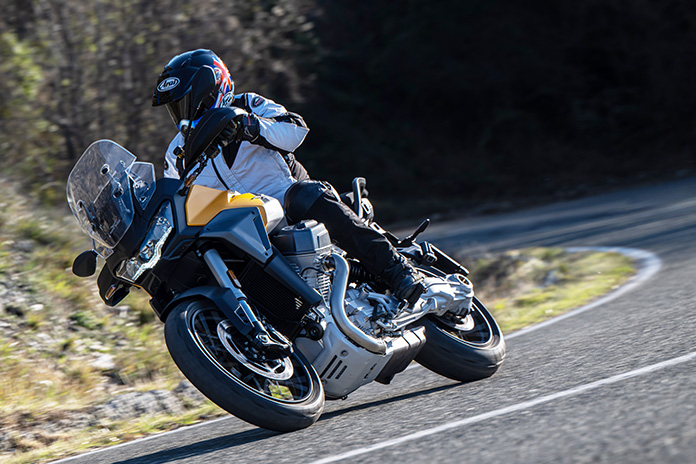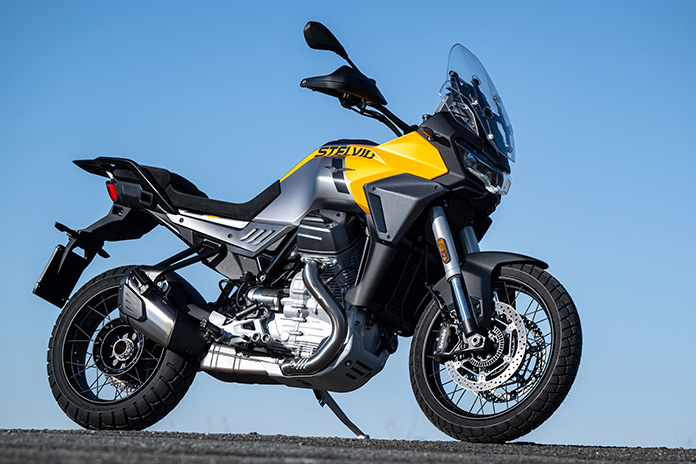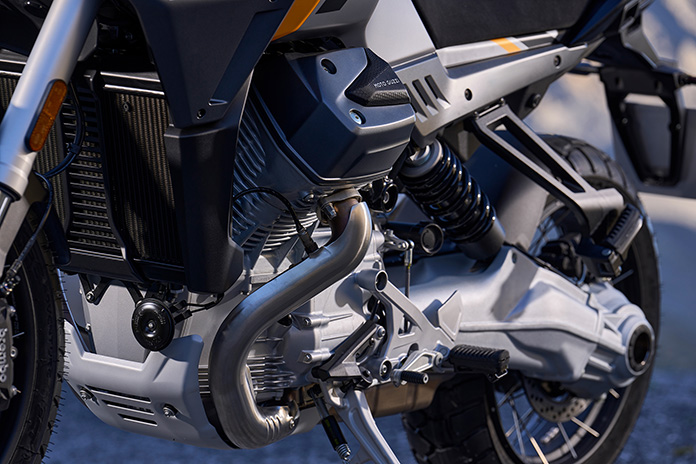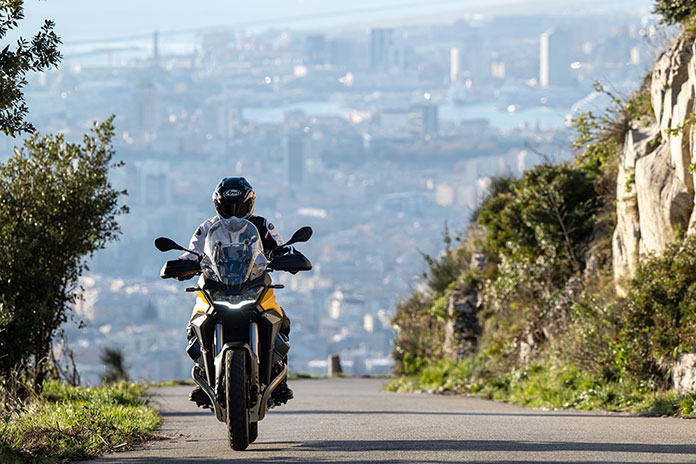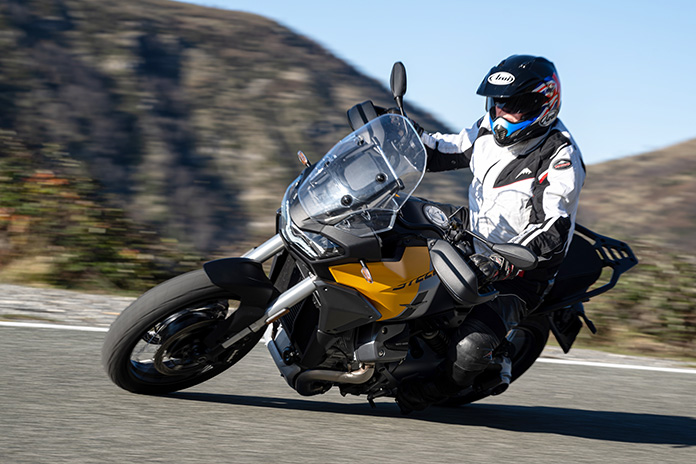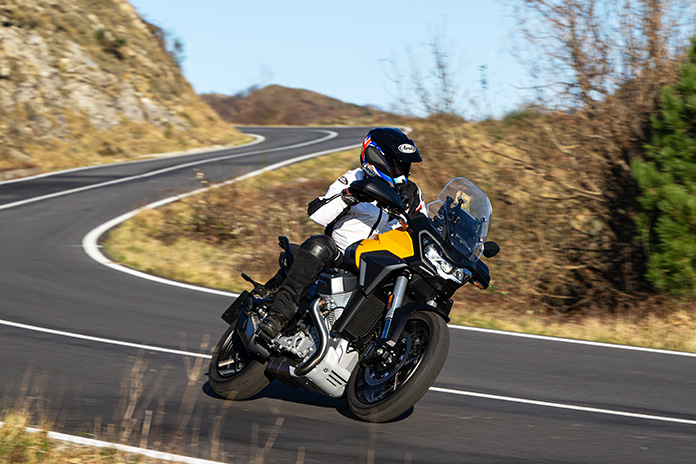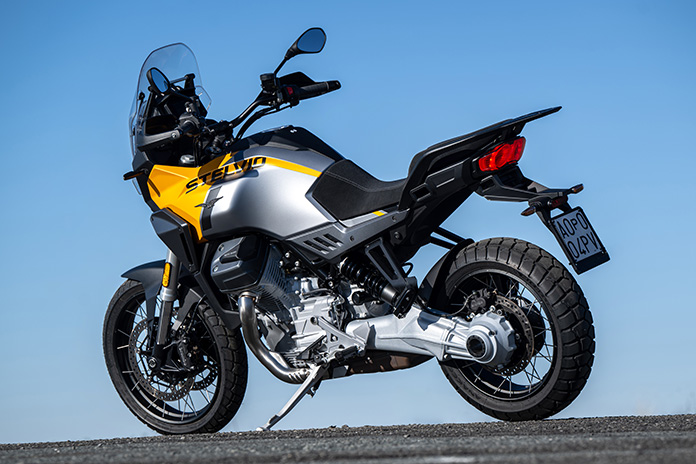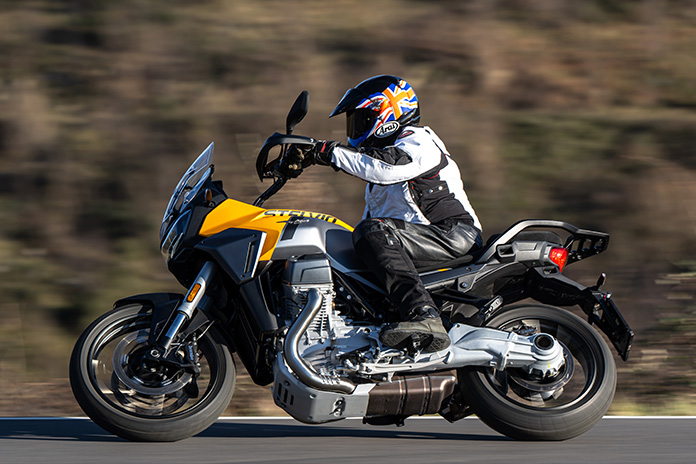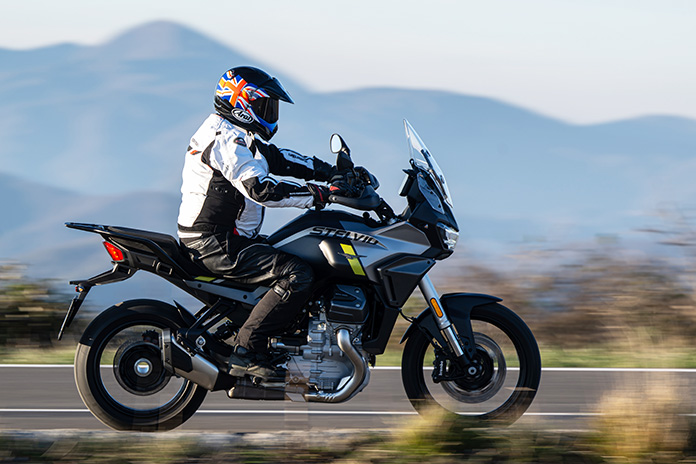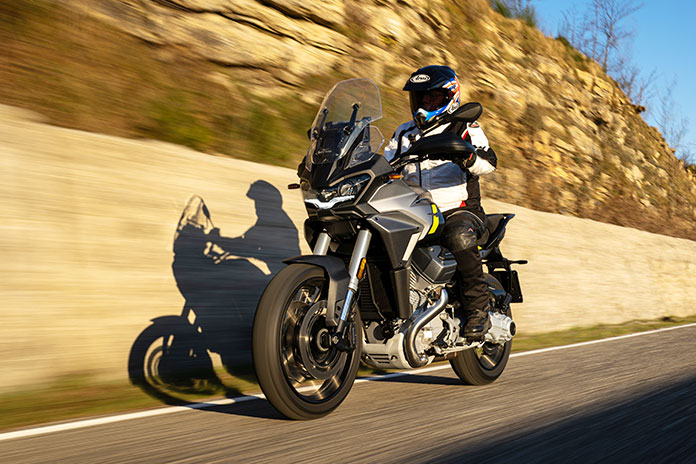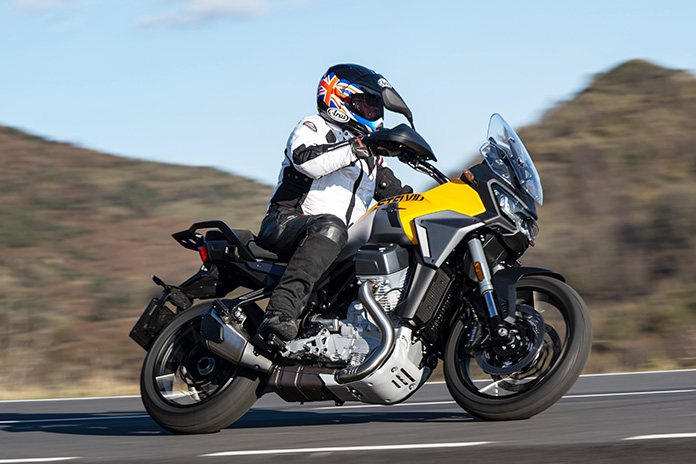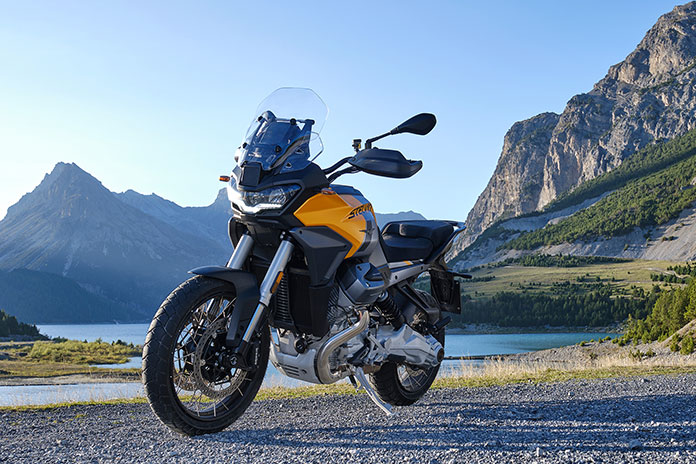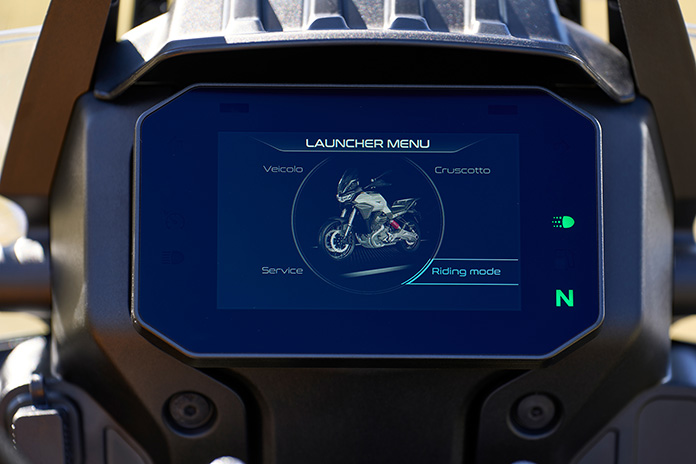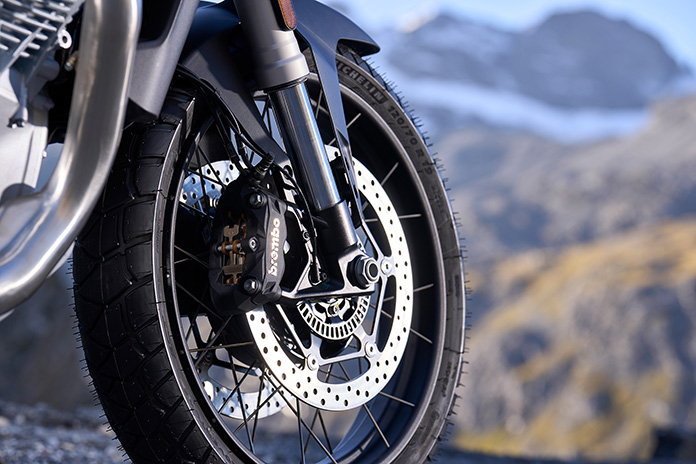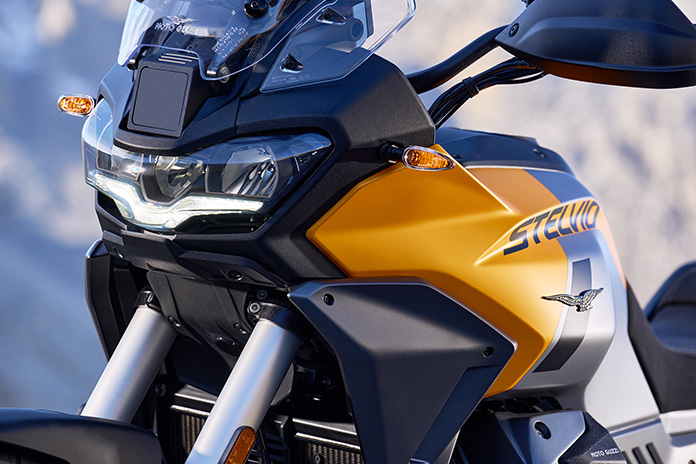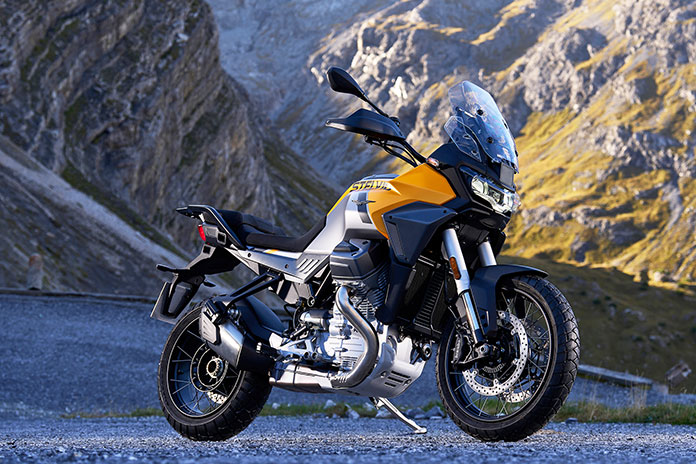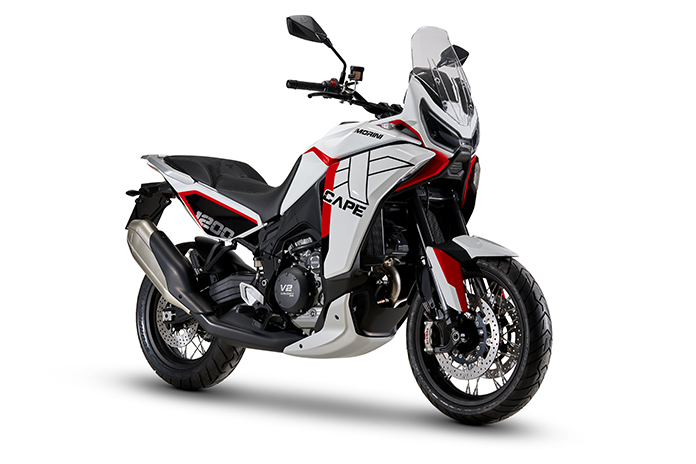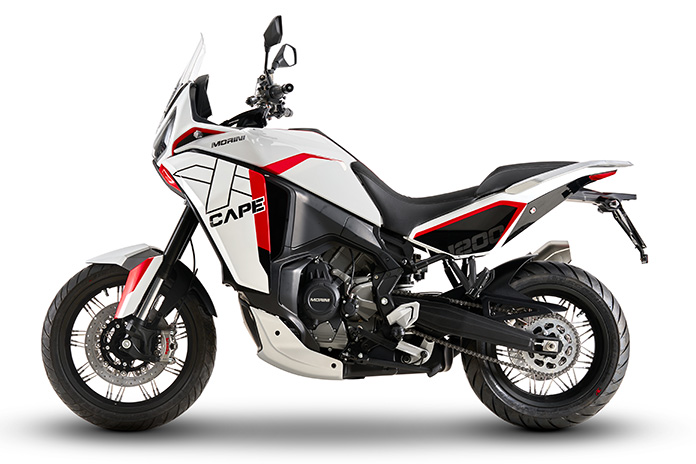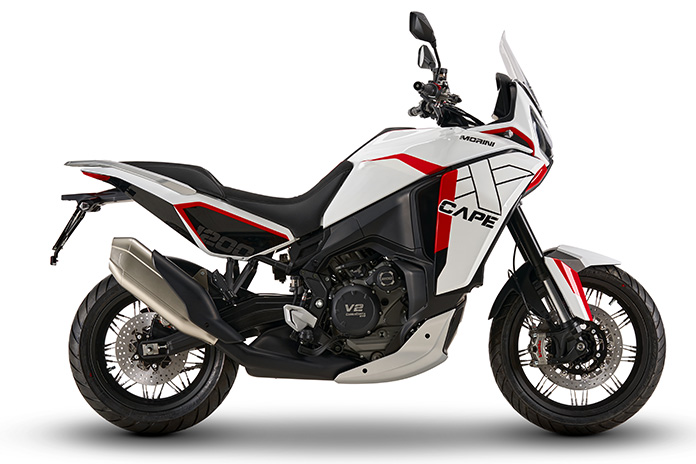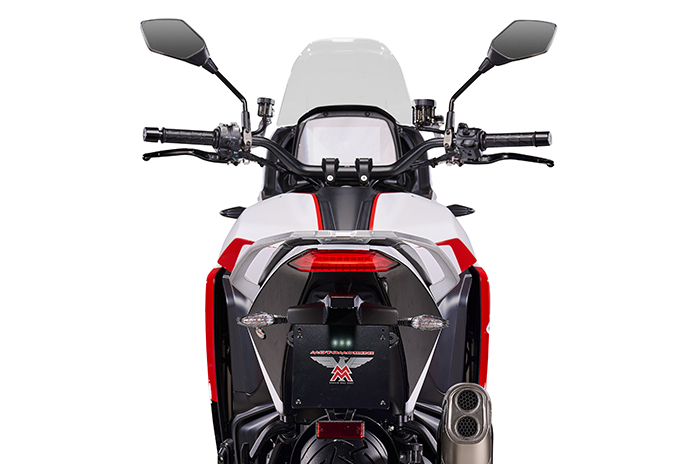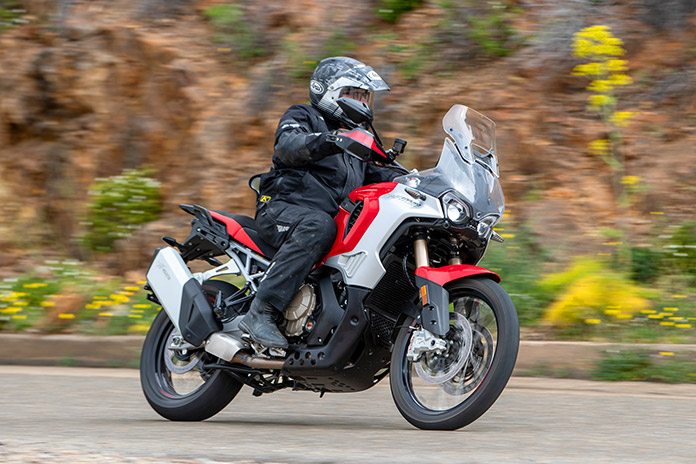
If you asked what I thought about MV Agusta around 2010, I’d quickly respond: Beautiful Italian lines and attitudes but priced for the very few.
Then, in 2012, MV introduced the F3 sportbike, offering the inline-Triple platform in relatively affordable 675 and 800 versions. The 675 performed decently for its short time in World Supersport from 2013-2020, taking five 3rd-place finishes and one runner-up.
The Triples ignited the Varese company’s new focus and opened the door to a broader range of riders – although still only for those with larger bank accounts. The F3s were followed by other models over the years, including the Dragster naked, Turismo Veloce sport-tourer, Superveloce neo-classic sportbike, the Rush hyper naked, and updated Brutale nakeds, among other special editions.
Related: MV Agusta Dragster RR SCS America Review | First Ride
At EICMA 2023, MV unveiled its first-ever adventure tourer – the LXP Orioli. The previous “Lucky Explorer” moniker, an homage to the Cagiva Elefant’s Paris-Dakar campaigns, was retired in favor of a tribute to Italian rally legend Edi Orioli.
Related: MV Agusta Lucky Explorer Project | First Look Review
This signified a transformation within the Italian brand to enter the adventure-touring market, something that made sense given its new relationship that began with Pierer Mobility – the parent company of KTM, Gas Gas, and Husqvarna – which had acquired 25.1% of the brand. This helped MV expand its lineup and launch a new product line in the brand’s historic factory in Schiranna.
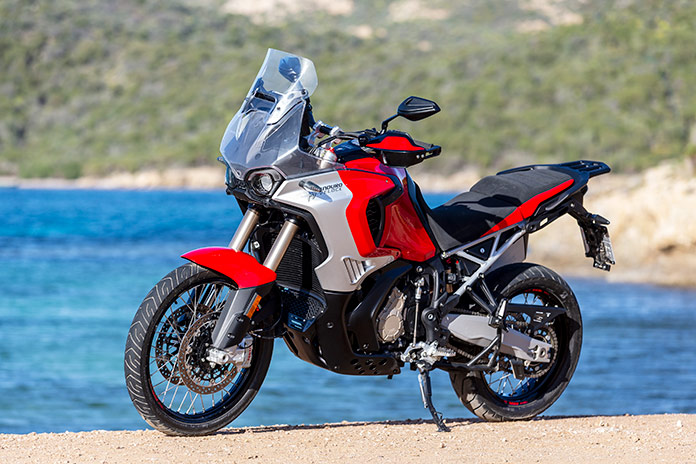
The business news continued to grow for MV Agusta, and in March of this year, Pierer Mobility increased its stake to 50.1%, gaining majority control of the brand.
The LXP Orioli is a beautiful machine, but only 500 will be made and each one costs a princely $29,000. This exclusivity changed with the release of the new Enduro Veloce, basically a base version of the LXP Orioli, which joins the MV lineup as the brand’s first full-production motorcycle in the fast-growing adventure touring segment.
The MV Agusta Enduro Veloce continues to celebrate the company’s racing history, specifically honoring the triumphs of the 1940s-era MV Agusta 98. The 98 was famously piloted by Vincenzo Nencioni to win the Golfo di La Spezia off-road race in 1946, followed by another notable win by Carlo Ubbiali at the British Six Days race in 1949.
GEAR UP
- Helmet: Arai XD-4
- Jacket: Klim Latitude
- Gloves: Klim Baja S4 Gloves
- Pants: Klim Latitude
- Boots: Spidi XPD X-Trail Outdry
To test the Enduro Veloce, I traveled to Sardinia, a Mediterranean island that’s a semi-autonomous region of Italy, where I logged 150 miles on mostly paved roads with a brief off-road excursion. Although the launch was mostly street-focused, with Bridgestone A41 (80/20) tubeless tires on its 21/18-inch spoked wheels, the small amount of dirt riding on bikes wrapped with the knobbier AX41 (50/50) tires proved the Enduro Veloce can hang with the latest adventure tourers.
I’d classify the Enduro Veloce as an 80/20 adventure tourer and a direct competitor to the Ducati Multistrada V2, Triumph Tiger 900, and BMW F 900 GS. But it’s much prettier, mostly due to MV Agusta’s focus on the “horizontal versus vertical” design philosophy, which translates to all bodylines, engine structures, graphics, paint, and every element flowing naturally from front to back and vice versa.
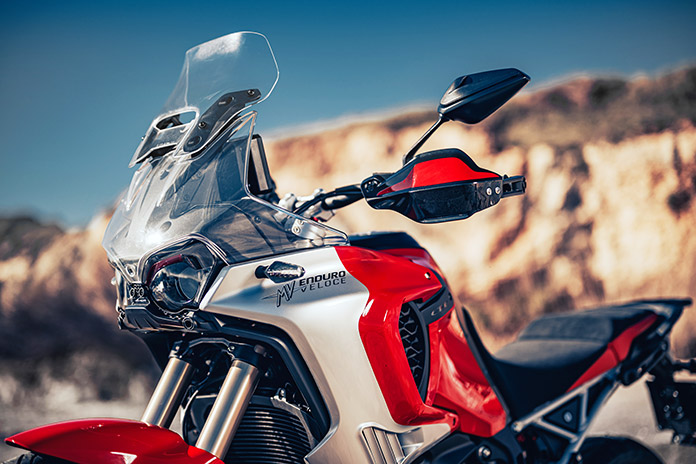
And would you really want to drop this fine-looking piece of Italian motorcycle art that costs nearly $23,000? If it meant exploring some of the world’s best two-track backcountry, I’d say hell yeah, especially because the road sections getting to those gravel roads will be so much fun.
Read all of Rider‘s MV Agusta reviews here.
MV Agusta Enduro Veloce Engine Performance
At the heart of the Enduro Veloce lies a 931cc powerplant that is the brand’s most radical departure from its predecessors. Unlike the 798cc Triples in other models, the Enduro Veloce’s engine is a clean-sheet design by the Varese R&D team, emphasizing lightness, compactness, and efficiency.
Weighing in at just 125.6 lb, the engine is 10% lighter than other MV Triples, yet it packs a formidable punch with claimed 124 hp at 10,000 rpm and 75.2 lb-ft of torque at 7,000 rpm. The engine’s lightness helps keep the bike’s purported dry weight to 494 lb, though the bike is likely to weigh more than 530 lb when the 5.3-gallon fuel tank is full and oil and coolant are added.
Yes, the Enduro Veloce is considerably heavier than the wet weights of around 480 lb for the KTM 890 Adventure and 490 lb for the Ducati Multistrada V2. At a photo stop, I nearly dropped the bike when my foot slid on some rocks, and it took muscle and a fellow rider (thanks, Costa!) to help arrest my fall. But while riding the MV, it felt nimble and light, even during 1st-gear speeds while turning around on tighter roads.
The real MV magic, however, begins as soon as the electronic throttle is opened. Approximately 85% of maximum torque is accessible from as low as 3,000 rpm, and it remains linear and potent up to the 7,500-rpm mark, where it gently starts to taper off. But for those looking for that extra oomph, this bike quickly revs to the “soft” 10,200 or “hard” 10,500 rev limit, keeping the exhaust note high and the riding exciting.
During the first few miles, the broad spread of torque allowed me to short-shift and ride lazily, letting the grunty engine do all the work. But the Enduro Veloce has a Dr. Jekyll and Mr. Hyde quality, and soon I began revving the bike nearly to the hard limiter before shifting, awakening the bike’s hooligan side.
One of the most notable features of the Enduro Veloce is its counter-rotating crankshaft. This feature, typically reserved for high-performance racing machines, counteracts the gyroscopic effect of the wheels, enhancing the bike’s agility and responsiveness.
During acceleration, the design notably balances the load on the 21-inch front wheel, which helps retain stability and control, especially when navigating the endless tight switchbacks and uneven asphalt in Sardinia. Despite the large-diameter front wheel, the bike remained remarkably nimble and willing to obey the slightest inputs.
The Enduro Veloce’s auditory experience is as refined as its mechanical performance. I’m a guitar player and love how a musician like Stevie Ray Vaughan can go from clean tones to screaming, deep mid-tones within seconds. The Enduro Veloce’s engine replicates this with a flick of the wrist.
The stock muffler is a big exhaust can, but it produces a symphony that crescendos near the rev limit, turning heads and signaling the raw power within. This exhaust note not only enhanced the riding pleasure but deepened my connection to the machine. The sound was most impressive above 10,000 rpm, creating an explosive pop while shifting. This process was facilitated by the smooth-operating 6-speed transmission, featuring a flawless up/down quickshifter.
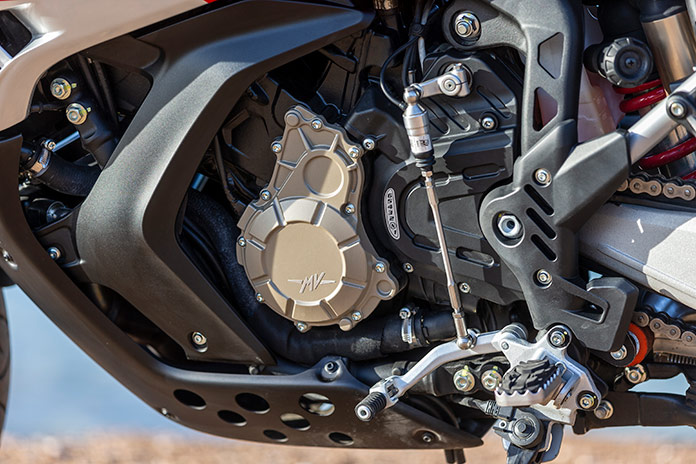
The Enduro Veloce delivers commendable fuel efficiency for its class, averaging around 40 mpg under mixed riding conditions. This efficiency translates to a range of more than 200 miles from its 5.3-gallon fuel tank if not riding like a loon, allowing for extensive journeys between refuels.
MV Agusta Enduro Veloce Electronics and Display
All this performance is managed by a sophisticated electronics suite. Wisely, the developers kept everything simple and intuitive to access through the controls and large 7-inch TFT display, providing simple-to-read data with beautiful graphics.
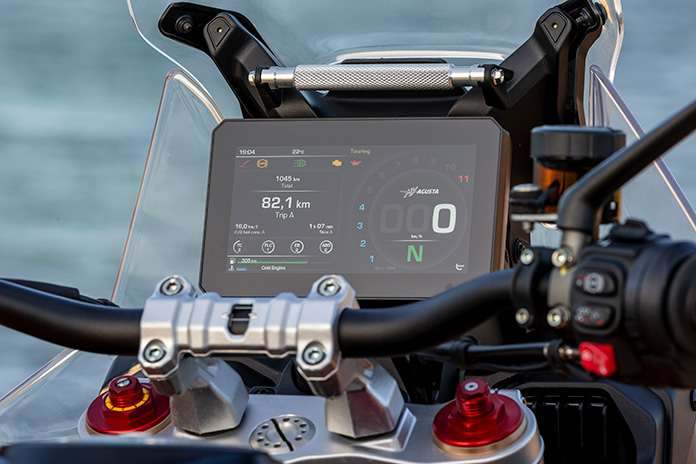
It all begins with riding modes, with inputs calculated from the 6-axis IMU: Urban, Touring, Off-Road, and Custom All-Terrain. The typical Sport mode is noticeably missing, but since everything can be tweaked, I simply made the Custom mode my version of Sport by altering the parameters to my liking. In each riding mode, you can adjust throttle response, engine torque, and engine response (how quickly it revs). There are also two levels of engine braking separate from the riding modes, allowing riders to tailor how the bike slows down when easing off the throttle.
The Enduro Veloce features eight levels of traction control: five for road use, two for off-road, and one for wet. The TC settings be switched on the fly, including deactivation in any mode, and they can be fine-tuned depending on whether you’re rolling on the stock Bridgestone A41 80/20 tires for mainly street riding or the optional AX41 50/50 tires for heavier off-road use.
The Enduro Veloce is also equipped with cornering ABS and rear-wheel lift mitigation (RLM). The ABS system is only switchable and customizable in the Off-Road and Custom modes, and both ABS and RLM can be changed while riding. Level 1 (lower intervention on the front wheel; off on the rear; cornering off; less invasive RLM) was optimal for off-road, allowing me to skid the rear and rely on some front ABS for harder braking. Level 2 offers full intervention. For the Custom mode that I was using as my personal Sport mode, I also used Level 1 ABS and totally shut it off a few times for added fun.
Three other rider aids are cruise control, wheelie control, and launch control. The cruise control performed flawlessly, relieving my throttle hand during longer highway stretches. Launch control seems more appropriate for a sportbike or a hyper naked, but hooligans will be hooligans, and I had fun with it at a few stop signs and on an isolated section of a straight road. Just push the “LC” button, pull in the clutch while in 1st, open the throttle, and when it tells you, release the clutch. This should help achieve the claimed 3.7-second acceleration from 0 to 60 mph, and the soundtrack is pure SBK.
MV Agusta Enduro Veloce Chassis, Suspension, and Brakes
The Enduro Veloce is built around a perimeter frame with a double-cradle design, complemented with a double-sided aluminum swingarm. This construction shifts from the gorgeous single-sided swingarms seen on all other MV models in its current lineup, emphasizing functionality over aesthetics.
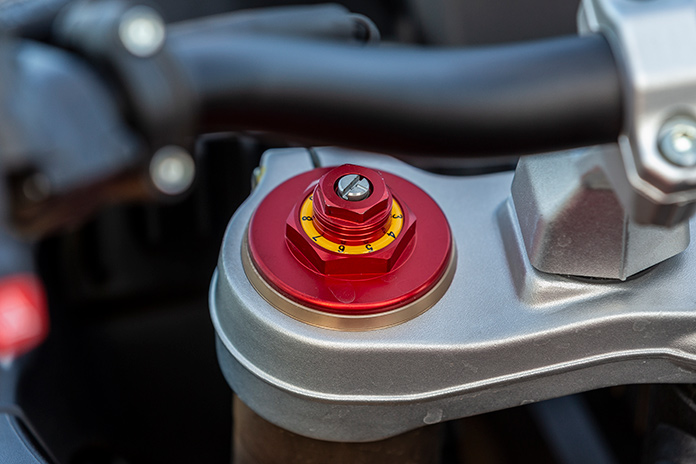
Given its price, the absence of electronic suspension on the Enduro Veloce is notable. Yet the fully adjustable Sachs suspension – with a 48mm inverted fork at the front and a rear shock featuring progressive linkage – proved highly capable. I weigh around 185 lb, and the only tweak I made throughout the test was half a turn on the shock’s preload knob. Nothing else was needed.
The suspension and wheel setup combined with the engine character impressed me all day. At first glance of the bike, with its 8.3 inches of suspension travel, 9 inches of ground clearance, and off-road ready wheels, I expected poor cornering stability. But I was wrong. The chassis remained stable throughout the corners, barely diving or squatting, allowing me to hold my line without much input. Thanks to the cornering ABS, I also experimented with some harsh, mid-corner brake jabs in an attempt to upset the chassis. The bike recovered quickly, allowing me to return to my line and finish the turns safely.
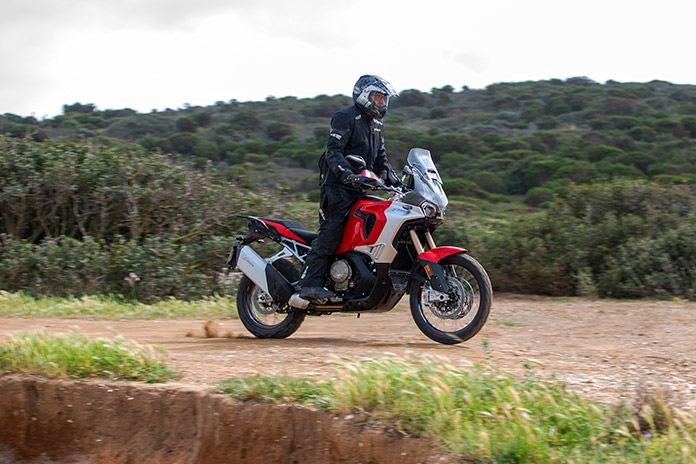
When I tested the bike with AX41 rubber for the off-road section, the long-travel suspension provided a plush feel. I didn’t adjust the suspension due to the short time I spent riding the dirt-ready Enduro Veloce, but the suspension in its stock settings felt ideal for lighter off-road use, allowing the bike to rebound quickly.
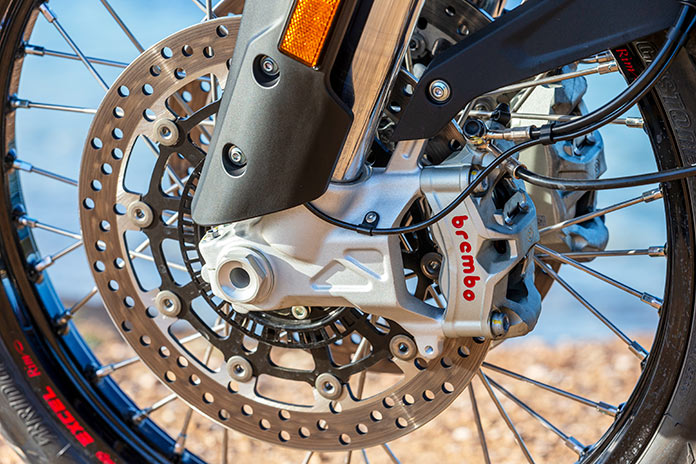
The Enduro Veloce is equipped with top-shelf Brembo Stylema radial monoblock front calipers, which clamp onto 320mm discs. The front lever feel is distinctly Brembo – accurate and responsive. This becomes evident when applying trail-braking techniques. The front lever provides substantial feedback and only a slightly bumpy feel when testing the true capabilities of the cornering ABS.
MV Agusta Enduro Veloce Ergonomics
Thanks to the design of its dual-height seat (33.5/34.3 inches), I was able to comfortably flatfoot at stops, which enhanced control and confidence, especially in slow traffic. While the seat provided reasonable comfort for most of the day, it became uncomfortable toward the end of the ride.
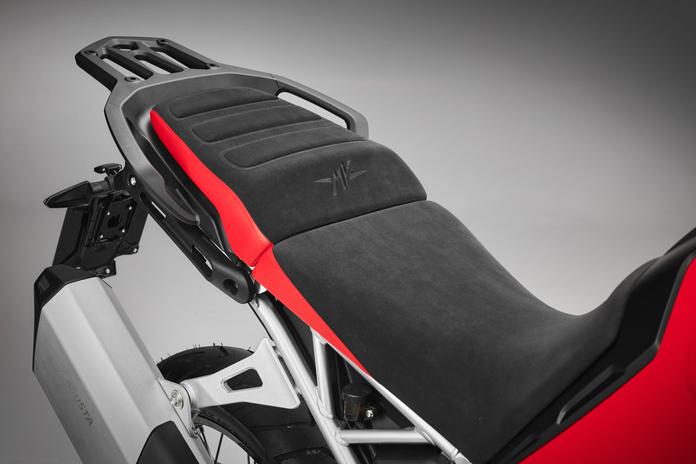
The handlebar, which initially appeared high, offered all-day comfort for my 6-foot frame. The MX-style bar is also adjustable to accommodate more aggressive off-road stances, which is helpful for either taller riders or those standing up for most of the day.
The footpegs are well-positioned for my 34-inch inseam and height, contributing to an ideal rider triangle and relaxed riding posture. The pegs also arrive with rubber inserts that dampen vibrations at highway speeds, enhancing comfort over long distances. These inserts can be quickly removed to switch to grippier cleated pegs for better control while off-roading.
And although I wore a peaked Arai XD-4 helmet, I didn’t experience major head buffeting – just some minor shakes at the top of 6th gear. The fairing and two-piece windscreen that’s split in the middle (but is not adjustable) optimize the airflow around the body.
MV Agusta Enduro Veloce: Other Highlights
In keeping with MV Agusta’s motto of creating “motorcycle art,” the Enduro Veloce has distinctive LED headlights. LEDs are also used for the turnsignals, taillight, and backlighting for the handlebar controls, a feature that would be handy during night rides.
Other convenience features include a keyless ignition system and the ability to connect mobile devices to the bike through the MV Agusta My Ride App, enabling navigation, communication functions, and sharing and tracking of ride data.
Remember the days of riding European motorcycles and worrying about frequent valve checks? MV Agusta fixed that issue, and the Enduro Veloce’s maintenance scheduling is streamlined. You won’t have to worry about valve checks until 18,600 miles. MV recommends oil changes every 4,600 miles and spark plug and air filter replacements every 9,300 miles.
MV Agusta Enduro Veloce: The Final Tally
The MV Agusta Enduro Veloce marks a bold entry into the adventure-touring market, blending MV’s rich racing pedigree with modern technological ADV advancements. Its form follows function, delivering both style and performance on twisty mountain roads and rugged trails.
From the 931cc Triple’s thrilling power delivery to the sophisticated electronics suite and agile chassis, this motorcycle is designed to enhance the riding experience. The counter-rotating crankshaft and carefully tuned suspension system ensure the bike remains nimble and responsive, irrespective of the terrain, and its comfort and features make it a versatile machine. It is a great choice for riders who want a blend of style, performance, and exclusivity – the hallmarks of MV Agusta’s legacy.
Check out more new bikes in Rider’s 2024 Motorcycle Buyers Guide
2024 MV Agusta Enduro Veloce Specs
- Base Price: $22,998
- Warranty: 4 yrs., unltd. miles
- Website: MVAgusta.com
- Engine Type: Liquid-cooled, transverse inline-Triple, DOHC w/ 4 valves per cyl.
- Displacement: 931cc
- Bore x Stroke: 81.0 x 60.2mm
- Horsepower: 124 hp @ 10,000 rpm (factory claim)
- Torque: 75.2 lb-ft @ 7,000 rpm (factory claim)
- Transmission: 6-speed, hydraulically actuated slip/assist wet clutch
- Final Drive: Chain
- Frame: High-tensile steel double cradle
- Wheelbase: 63.4 in.
- Rake/Trail: NA/4.6 in.
- Seat Height: 33.5/34.3 in.
- Suspension, Front: 48mm inverted fork, fully adj., 8.3 in. travel
- Rear: Single shock, fully adj., 8.3 in. travel
- Brakes, Front: Dual 320mm discs w/ 4-piston radial monoblock calipers & ABS
- Rear: Single 265mm disc w/ 2-piston caliper & ABS
- Wheels, Front: Spoked tubeless, 21 x 2.15 in.
- Rear: Spoked tubeless, 18 x 4.0 in.
- Tires, Front: 90/90-21
- Rear: 150/70-18
- Ground Clearance: 9.1 in.
- Dry Weight: 494 lb (factory claim)
- Fuel Capacity: 5.3 gal.
The post 2024 MV Agusta Enduro Veloce Review | First Ride appeared first on Rider Magazine.
Source: RiderMagazine.com

